The Q6 series from Samsung is the simplest line of QLED televisions from the Koreans for 2024. It stands out for its ease of use and several handy features. Thanks to the Tizen system found in the Q60D, we can easily switch between apps like Netflix and Prime Video, and everything runs quickly and smoothly. Using it doesn't require any special preparation – everything is intuitive. One of the cooler additions is the solar remote. It not only eliminates the need for battery changes but also allows you to control other devices, such as a decoder. This means you don't have to keep multiple remotes handy, which will be appreciated by anyone who values order in their living room. In terms of picture quality, the television performs really well in its class. The contrast is high enough that the image looks sharp even during darker scenes. In bright rooms, the TV handles itself without major issues – the screen is bright enough for the image to be clear during the day. Of course, the lack of Dolby Vision might be noticeable with HDR materials, but HDR10+ support is still a good alternative, especially at this price. The Q60D is also a good choice if you occasionally game on a console. Low input lag means the image reacts quickly to our actions, which is great for both dynamic action games and sports. The Game Bar feature is a simple way to quickly adjust settings without leaving the game, which will definitely be useful for many people. The design of the Q60D also scores points – its slim design looks good in the living room, doesn't take up much space and easily fits into various interior styles. In summary: This is certainly not a device that aspires to be the best television of all time, but it is definitely a model that is worth its relatively low price.
- Matching (Score)
- Our verdict
- TV appearance
- Where to buy
- Contrast and black detail
- HDR effect quality
- Factory color reproduction
- Color reproduction after calibration
- Smoothness of tonal transitions
- Image scaling and smoothness of tonal transitions
- Blur and motion smoothness
- Console compatibility and gaming features
- Input lag
- Compatibility with PC
- Viewing angles
- TV efficiency during daytime
- Details about the matrix
- TV features
- Apps
- Playing files from USB
- Sound
Samsung Q60D / Q67D / Q68D vs SAMSUNG QN80F
Direct compare
Q60D / Q67D / Q68D
QN80F

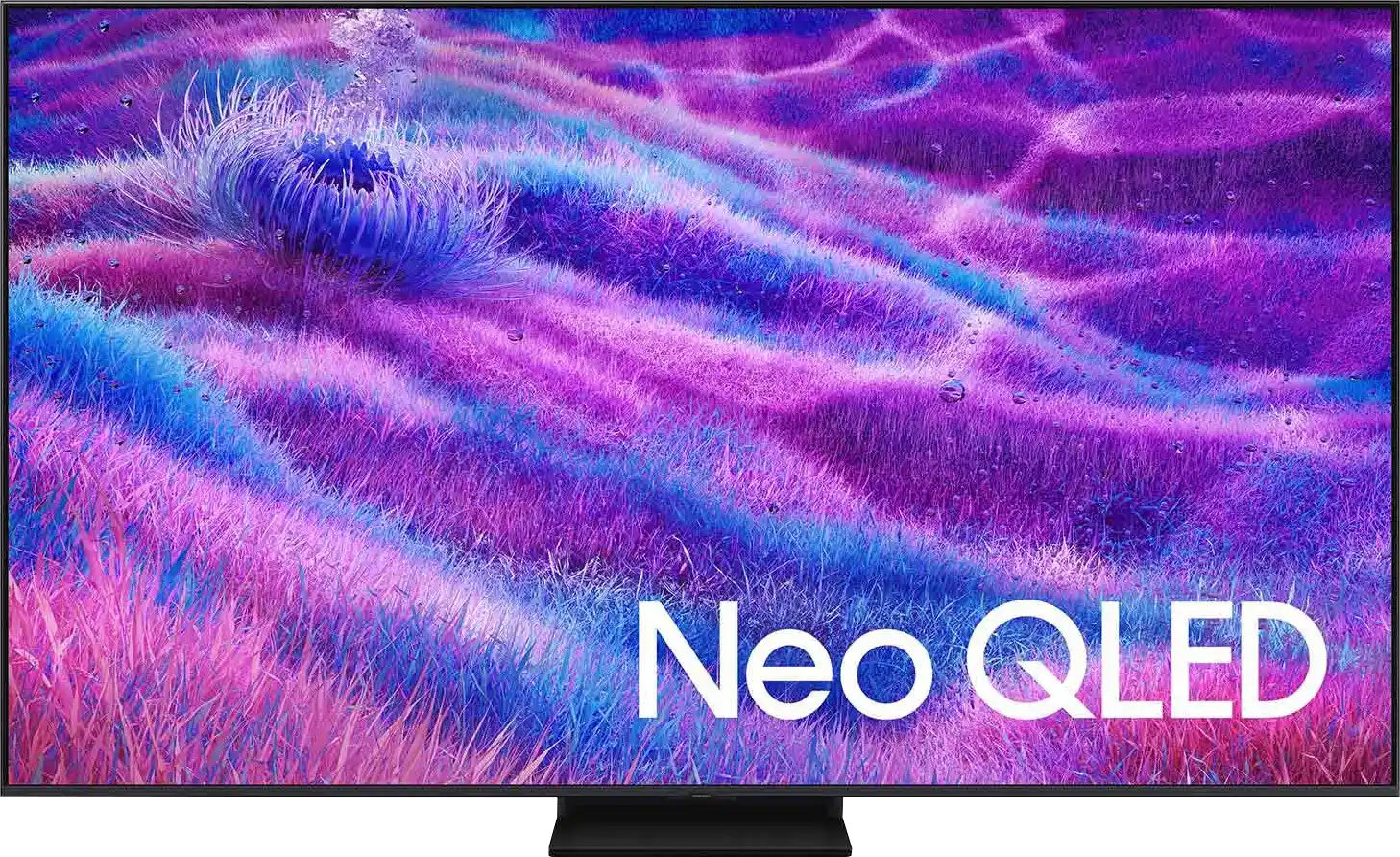
Panel type: LCD VA
Resolution: 3840x2160
System: Tizen
Model year: 2024
Complete the survey to find out the result

Panel type: LCD VA
Resolution: 3840x2160
System: Tizen
Model year: 2025
Complete the survey to find out the result

Overall rating
6.3
7.3
Movies and series in UHD quality
6.3
6.9
Classic TV, YouTube
6.0
6.8
Sports broadcasts (TV and apps)
5.2
6.7
Gaming on console
7.0
8.5
TV as a computer monitor
6.0
8.8
Watching in bright light
6.0
6.6
Utility functions
7.0
7.7
Apps
8.7
8.7
Sound quality
6.2
6.7
Complete the survey to find out what fits your preferences
Advantages
High native contrast
Handles sunny days well
Easy-to-use Tizen operating system
Low input lag
Interesting choice for casual gamers
Great black levels and contrast - VA panel combined with MINI-LED backlighting.
Excellent brightness - up to 1000 nits in HDR
Fast and responsive panel - 144 Hz
Robust support for gamers - 4xHDMI 2.1, VRR, ALLM, GameBar, Game Motion Plus
Very good usability in daylight
Advanced Tizen operating system
Easy to use
PiP function
Disadvantages
No Dolby Vision
No recording support
Will not play sound in DTS format
No DTS format support – a limitation when connecting a home theatre system
No USB recording function
Relatively few dimming zones
Issues with the HGiG function (for gamers) – the update removed this option*
Our verdict
QN80F is the first in the history of Samsung's "eighty range" to feature Mini LED backlighting. And it does it really well. Although the number of dimming zones isn't staggering, the black levels are solid, and in combination with high brightness, it allows for a very decent picture in HDR content. Additionally, there's a 144 Hz panel that provides excellent motion fluidity, and the gaming features – VRR, ALLM, Game Motion Plus – make the QN80F an option truly designed for those gaming on consoles or PCs. The television operates quickly and responsively, and the Tizen system runs like lightning – whether you’re searching for apps or switching sources. Is there anything to nitpick? Of course, as always – there are shortcomings in the system (like USB recording), DTS support is absent, and Mini LED comes with its own limitations. But the QN80F is a fantastic everyday television – versatile, refined, and... with great price potential. Looking at the history of this series, we can expect that this "eighty" will still shake things up once it hits the first reasonable promotions. And then it could be virtually unbeatable at its price – especially if Samsung fixes the minor teething issues.
TV appearance




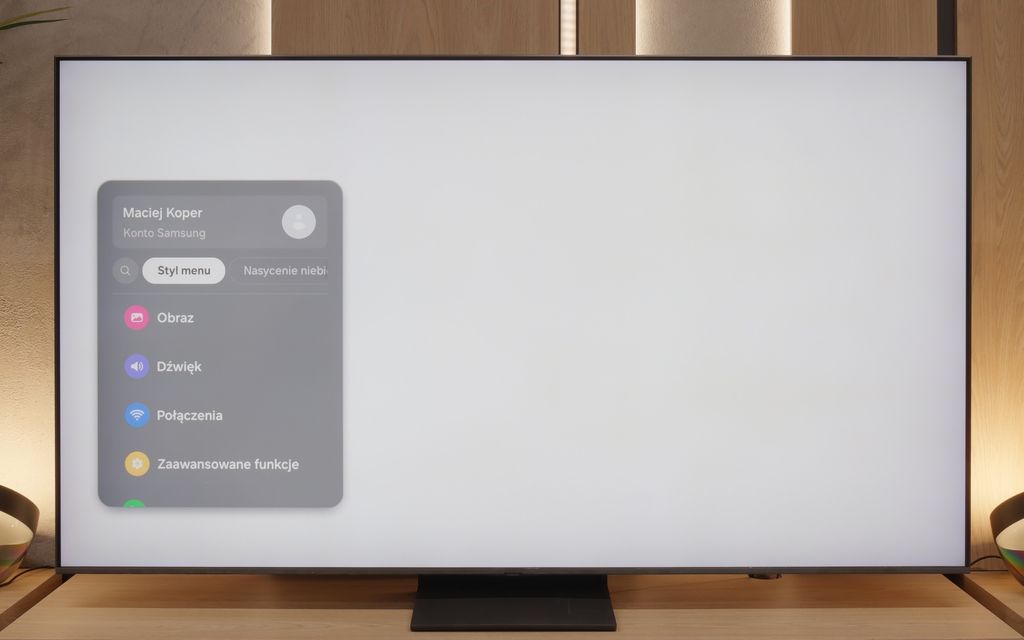
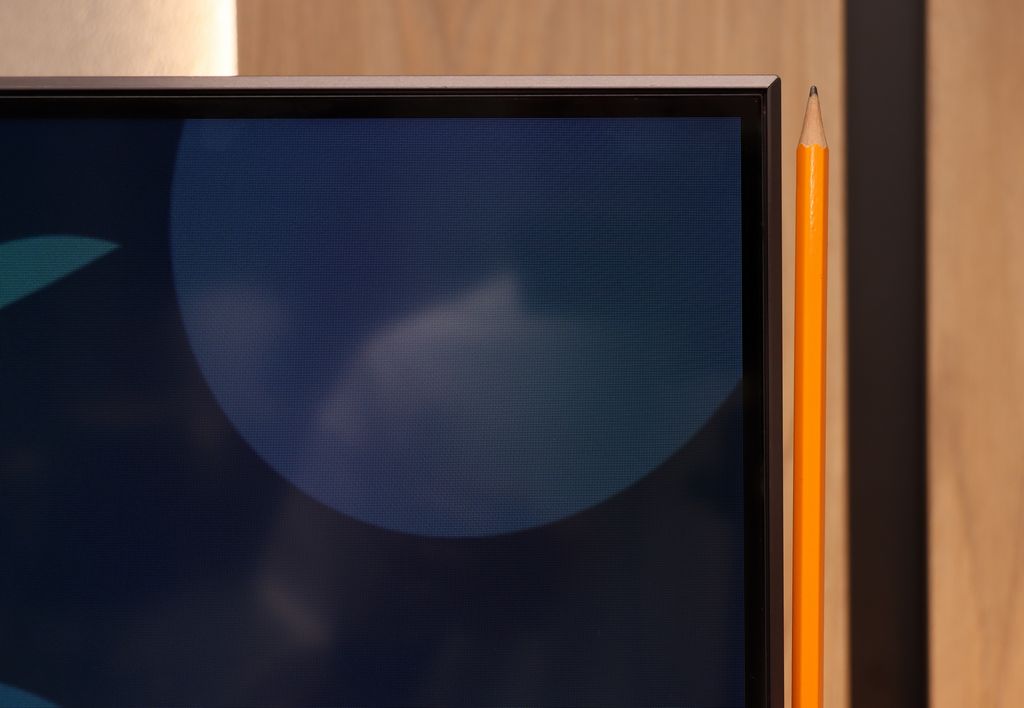
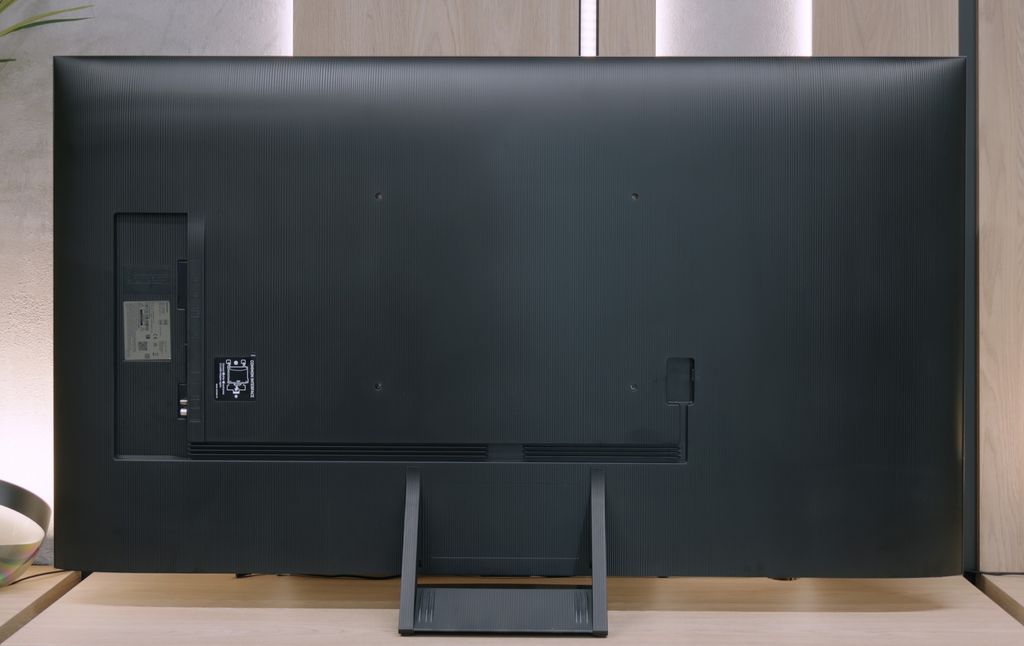
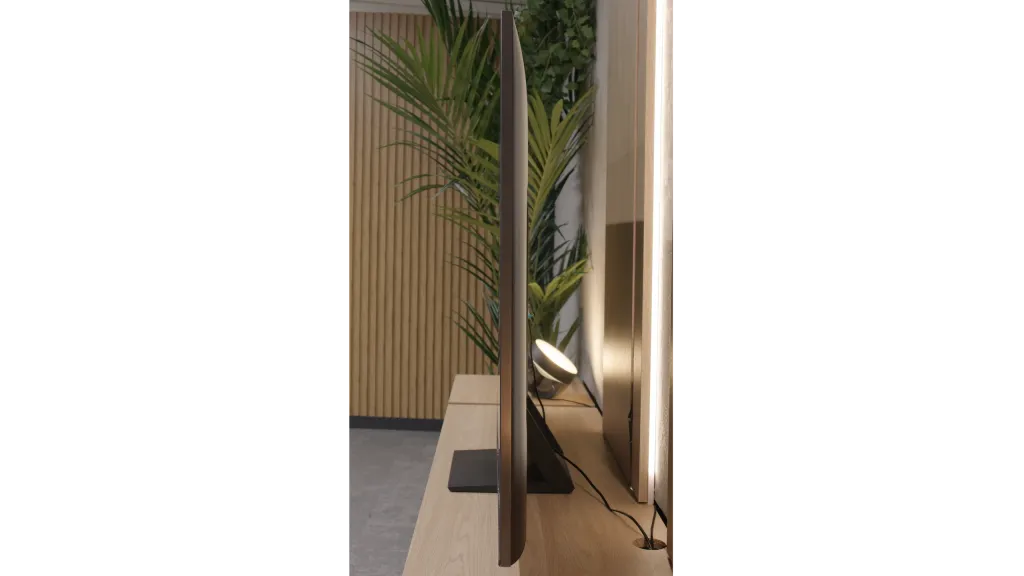
Contrast and black detail
6/10
6.8/10
Local dimming function: No
Local dimming function: Yes, number of zones: 88 (8 x 11)
Contrast:

Result
5,650:1

Result
6,500:1

Result
5,850:1

Result
5,850:1

Result
5,400:1

Result
34,100:1

Result
8,200:1

Result
32,500:1

Result
4,550:1

Result
3,800:1
Halo effect and black detail visibility:

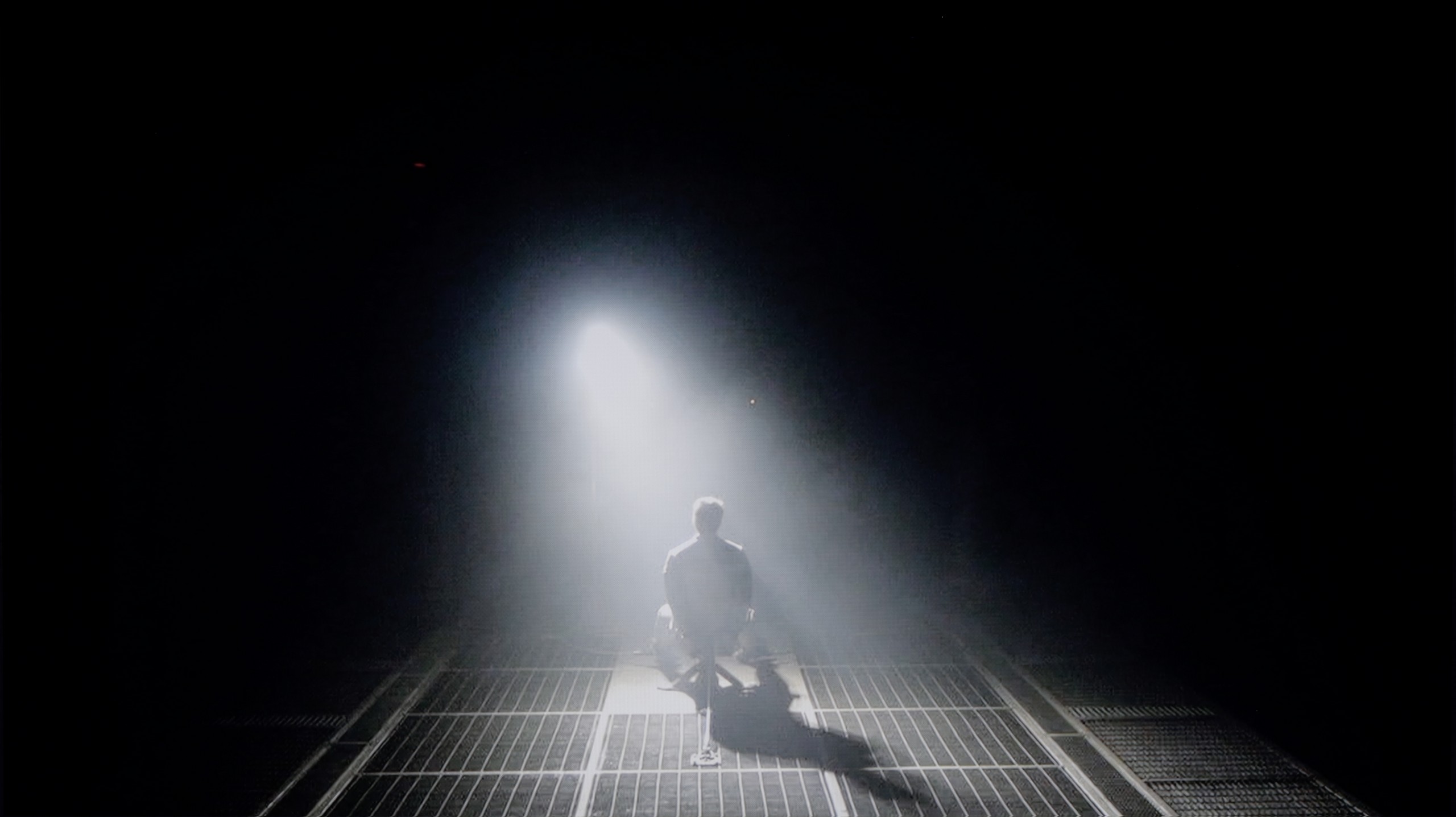
The Samsung Q60D television is equipped with a VA panel, which provides deeper blacks and higher contrast compared to IPS/ADS panels. VA panels are characterised by their better ability to display deep blacks, so if we're looking for an LED display for night viewing, this type of panel shouldn't disappoint us. In contrast tests, the television showed a result of around 6000:1, which can be considered a decent result, providing satisfactory visual experiences in most scenes. In more challenging scenes, like that from the film Oblivion, the television handles light separation well, adding detail and depth. However, in scenes with more demanding lighting compositions, like that from the film Sicario 2, the limitations resulting from the absence of local dimming technology are noticeable. Black elements of the image tend to resemble navy blue. Despite this phenomenon, the Q60D offers truly decent contrast.
QN80F is a representative of the Neo QLED series, meaning it is a television with Mini LED backlighting. Unlike its cheaper cousin, the QN70F model, the diodes here are placed directly behind the panel (instead of at the edges), which gives a solid advantage from the start when it comes to contrast control. In the 65-inch variant we tested, we counted 88 dimming zones – a result that may not be very impressive, but as it turned out, sufficient to achieve quite decent results.
In tests based on scenes from films such as Oblivion or The Meg, the QN80F performed well – blacks were deep, and the overall image consistency was eye-catching. However, in more demanding moments (e.g., scenes with a large number of bright details on a dark background), a halo effect appeared. This is where the limitation of the number of zones comes into play – bright elements could bleed around, and some details in dark areas became less visible. In one scene with a helicopter (The Meg), we even noticed slight brightness flickering, as if the television was trying its best to maintain visibility of the details at the expense of black depth.
However, these are not issues exclusive to this model – the halo effect or contrast drops in very complex scenes are something that most Mini LED televisions struggle with, even the more expensive ones. In its class, the QN80F still performs positively and offers noticeably better contrast than the QN70F model with edge lighting. For most users, this will be a level more than sufficient – although not perfect.
HDR effect quality
5.7/10
5.8/10
Luminance measurements in HDR:

Result
527 nit

Result
530 nit

Result
524 nit

Result
531 nit

Result
537 nit

Result
799 nit

Result
533 nit

Result
717 nit

Result
245 nit

Result
656 nit
Scene from the movie “Pan” (about 2800 nits)


Scene from the movie “Billy Lynn” (about 1100 nits)


Static HDR10


Dynamic: HDR10+
Dynamic: HDR10+


HDR luminance chart:
SAMSUNG QN80F
HDR luminance
Samsung Q60D / Q67D / Q68D
HDR luminance
Television Samsung Q60D, regardless of the tested scene, achieves brightness levels above 500 nits, which is above average for this class of devices. Such a level of brightness allows for a taste of true home cinema, with clearly visible details in bright areas of the image and well-rendered contrast dynamics, especially when watching content from streaming platforms or films played from Blu-ray. This means that movie screenings gain greater depth and realism, particularly in well-lit scenes. Despite the use of quantum dot technology (QLED), the television does not achieve outstanding results in colour reproduction. The coverage of the DCI-P3 colour space is only 90%, which may be noticeable in more demanding scenes, where the richness and saturation of colours play a key role in image quality.
QN80F is quite a bright screen – in synthetic tests, it reached nearly 1000 nits, which allows for reasonable expectations of HDR content. And indeed, in many scenes, the TV can truly shine. Sequences with a lot of light – like shots from the movie Life of Pi or wide, bright surfaces in The Meg – look impressive. Brightness stays around 700 nits, which provides a solid effect, enough to feel the true "HDR magic." Unfortunately, not every scene looks this good. In content with small, bright details on a dark background, like in Sicario 2, the TV can struggle – it can significantly dim individual elements, sometimes to the point where they disappear from the image. This is a result of the limited number of dimming zones, forcing the device into compromises: either stick to inky blacks or sacrifice some detail. QN80F usually chooses the former. As a consolation, it offers quite decent coverage of a wide color palette – DCI-P3 at 93%. It's not the highest score on the market, but it's more than enough for most content on streaming platforms.
Factory color reproduction
6.5/10
6/10


Factory Mode
After calibration


Factory Mode
After calibration
Samsung has been offering a "Filmmaker" mode in its TVs for several years now, aimed at providing the most faithful picture settings straight from the factory, in line with the vision of filmmakers. This is certainly a big step towards cinematic quality at home, but it is worth noting that this mode is not without its issues.
For example, the white balance in both SDR and HDR modes exhibits an excessive amount of red, which makes the image too warm. As a result, the skin tones of actors and bright scenes can appear unnaturally flushed. The Colour Checker test further confirms this problem – colour samples often shift towards red hues, deviating from the neutral colour representation that would be more desirable in a professional setup.
When it comes to contrast, there is a noticeable strong drop at the beginning of the gamma graph, where values below 2.4 drop all the way down to 2.1. As a result, the image in darker scenes may appear less distinct, losing depth. In the case of HDR content, the EOTF curve (which is responsible for brightness reproduction) shows a strong spike at the beginning of the graph, which can lead to excessive brightness in the lighter parts of the image, disrupting the natural tonal balance.
We always test TVs in the best available factory mode – for the Samsung QN80F, this is the Filmmaker mode, and indeed, it provides the settings closest to the creators' intentions. However, this doesn’t mean everything looks perfect. In SDR content, the biggest issue was an unbalanced white balance – slight deficiencies in green and a noticeable excess of red led to noticeable colour errors, and one could say the screen had a pinkish hue. This was clearly visible in the colour checker test, where colours “escaped” outside their target fields – to such an extent that a sensitive viewer's eye could catch it even without the help of a meter.
In HDR content, the white balance was much better, but another issue arose – brightness management. The EOTF curve caused an overly bright image most of the time, which affected the perception of contrast and made the screen slightly “flicker” during dynamic changes in light. We’ve already discussed this in the paragraphs about black levels and HDR. Fortunately, Samsung offers users plenty of options. The QN80F features a rich set of calibration options, including a 20-point white balance – which is why we decided to check what this TV is really capable of after a proper calibration.
Color reproduction after calibration
8/10
8.3/10




After professional calibration of the Samsung Q60D television in film mode, users can enjoy a significant improvement in image quality. Samsung televisions have always offered 2- and 20-point grayscale adjustment and an advanced CMS (Colour Management System), allowing for precise colour and shade adjustments. The white balance for both SDR and HDR has been stripped of strong peaks and tendencies towards colour drifting into red tones, significantly enhancing the naturalness of the image. Although a few larger errors can still be observed in HDR mode, the overall quality of colour reproduction has been excellently improved. Regarding contrast, although drastic changes cannot be said due to the limitations of the television's technology, the improvement is noticeable. Thanks to calibration, details in dark scenes are more visible, and the differences between light and dark elements of the image have been enhanced. This makes the overall perception of the image more satisfying, allowing viewers to enjoy greater depth and realism in the displayed content.
After conducting a thorough calibration, it was possible to bring most image parameters to a really good level. The white balance in both SDR and HDR presents itself almost perfectly – the image is natural, neutral, and free from the previously noticeable redness. Colours have gained depth, and the overall visual experience has become more pleasant and cohesive. It was also possible to partially manage brightness, which in the factory version could cause issues. The EOTF chart shows that the television performs much better with brightness after calibration – there is no longer excessive dimming of certain elements. In films, it can still be noticed that the QN80F has a tendency to slightly brighten the smallest bright details – this is already a consequence of the device's construction and the limited number of dimming zones. In short: not everything can be overcome, but what was possible has been improved. After calibration, the QN80F makes a really good impression, looking simply more mature and professional.
Smoothness of tonal transitions
7/10
9/10





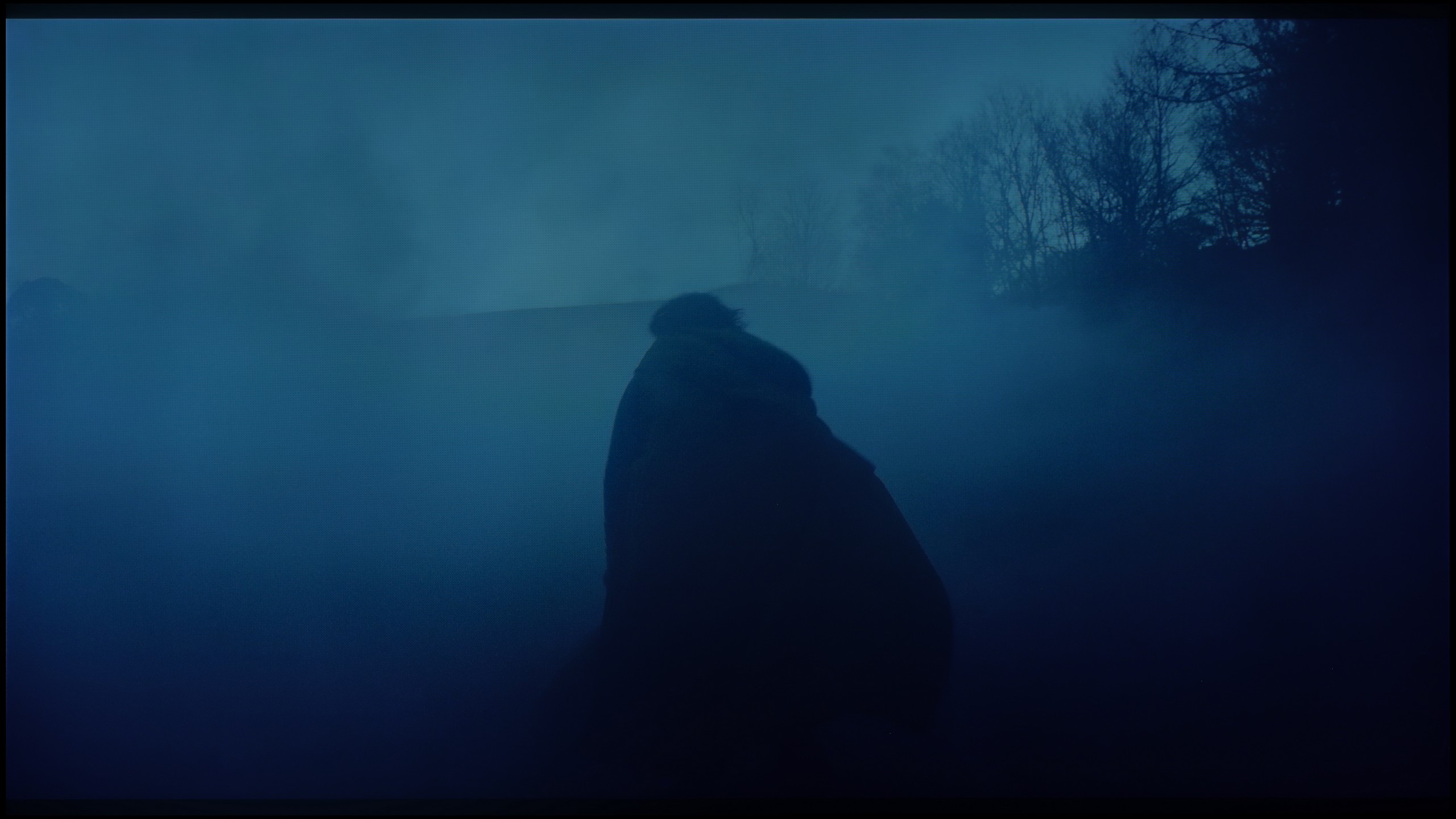






Samsung Q60D offers decent performance, making it an attractive choice for movie and gaming enthusiasts. The gradation of bright colours is definitely a strong point of this model, making brighter scenes appear exceptionally natural and smooth. Although with darker transitions the colour blending is somewhat more noticeable, the overall effect is still satisfactory. The television handles tonal transitions well, providing viewers with visual experiences that enhance movie nights and gaming sessions. With these qualities, the Samsung Q60D won't spoil our film screenings.
In this regard, the QN80F really delivers. Transitions between colours are smooth, nothing tears, and there are no annoying bands in the sky or strange spots in the shadows. Movie scenes in darker tones performed particularly well – and that's where most televisions start to struggle. If you really focus, you might notice slight banding in the brightest areas, but that's really stretching it. In everyday viewing, no one should have a problem with this. To put it simply: the tonal transitions are so good that you can forget about them – and just enjoy the movie.
Image scaling and smoothness of tonal transitions
5.4/10
7/10
Smooth transition function

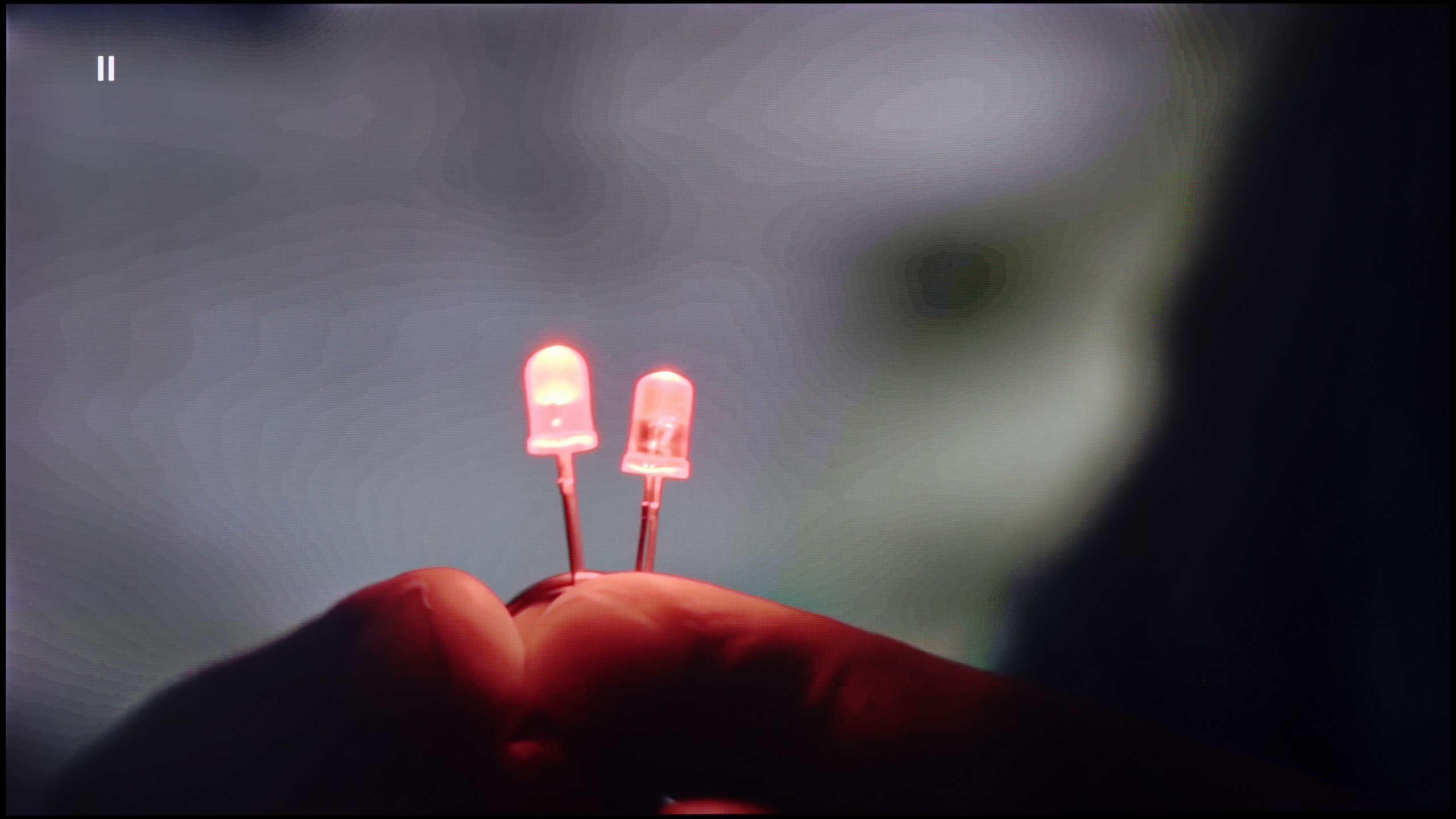
Image without overscan on the SD signal

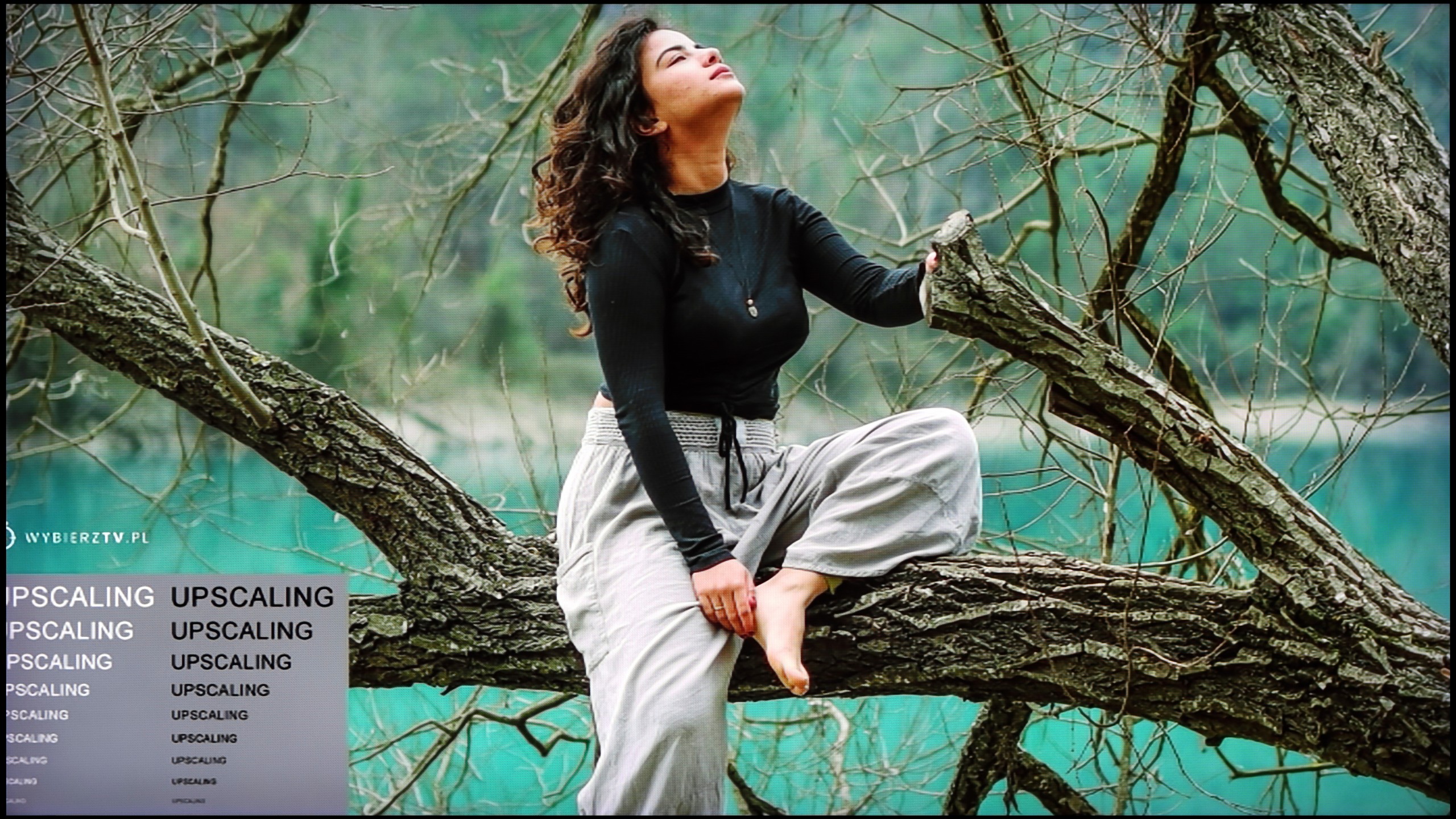
However, when it comes to processing and scaling lower quality materials, the television performs quite well. The image is rendered without overscan, which ensures full use of the available screen space. Additionally, the outlines of the model or branches of the tree are not overly jagged, resulting in a satisfactory quality of the displayed content. Although noise reduction could be more effective, the overall processing results of lower quality materials are positive and meet expectations.
If you notice strange colour transitions or unwanted artefacts while watching lower quality materials – for example from YouTube – it's worth checking the settings and enabling the noise reduction feature. In our opinion, the best setting is at the 'medium' level – it effectively smooths out problematic colour transitions without overly blurring the entire image. However, it's important to know one thing: this option tends to remove film grain. If someone values preserving that effect (e.g., in older films), it's better to simply turn it off – regardless of the level, the grain always disappears.
Regarding resolution scaling (also known as upscaling), Samsung – as usual – performs very well in this area. The QN80F doesn't quite match the top models costing tens of thousands, but for its price class, it performs impressively. Materials of very poor quality (e.g., from SD television or older video files) are noticeably improved and look surprisingly decent. The only noticeable downside is the typical Samsung issue with overscan – which is a slight cropping of the image edges at very low resolutions, such as 576p.
Blur and motion smoothness
4.5/10
7.5/10

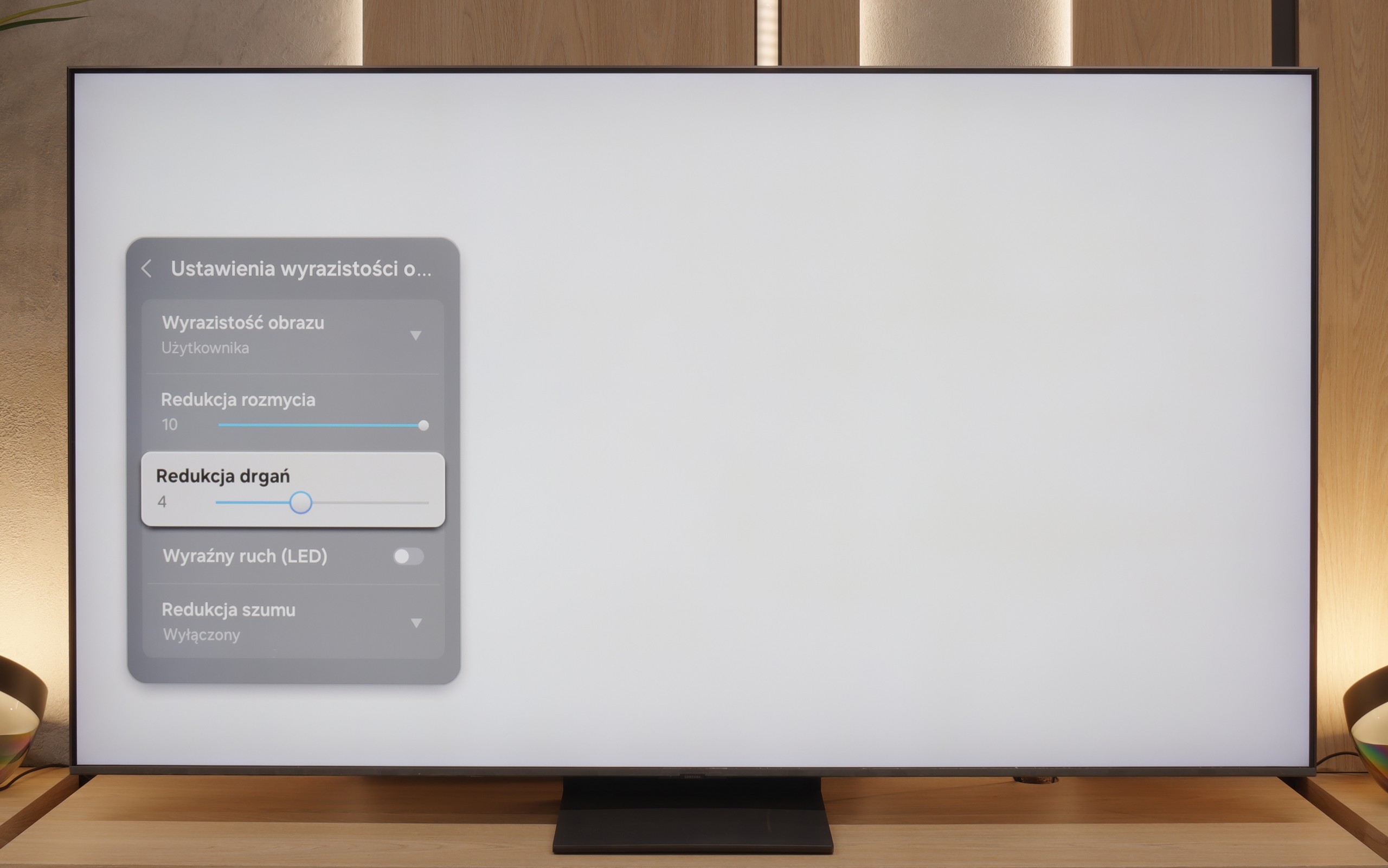
Blur (native resolution, maximum refresh rate):






Blur (BFI function enabled):
Image flickers in this mode



Image flickers in this mode

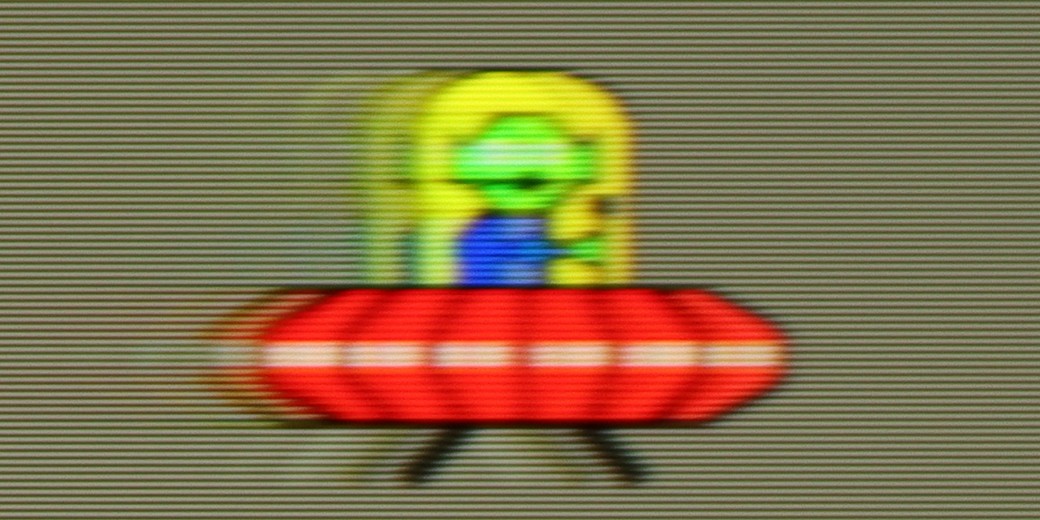

Samsung Q60D is equipped with a 60 Hz panel and a feature to enhance movie smoothness, known as "Motion Blur Reduction." This function aims to minimise motion blur and improve overall image fluidity, which will certainly appeal to users who primarily seek a television for watching movies and series. Thanks to this technology, viewers can enjoy a more fluid visual experience, even in dynamic action scenes where details are crucial. However, it is worth noting that while "Motion Blur Reduction" improves image fluidity in films, for gaming, this panel may not be the best choice due to its considerable motion blur effect, which can be seen in the photo below.
QN80F is truly a “fast” TV. The panel used offers a refresh rate of up to 144 Hz, which in practice means that the screen keeps up with the action – whether we’re watching a movie, playing games, or browsing dynamic content online. The image doesn’t stutter, isn’t overly blurred, and everything simply looks smooth and pleasing to the eye. Of course, the manufacturer hasn’t forgotten about cinema fans – in the settings, we find an option to adjust motion smoothness, allowing us to tailor the effect to our own preferences. You can leave a more “frame-y” look (for those who enjoy the classic film vibe) or crank up the smoothness to a higher level to achieve a theatrical smoothing effect. Importantly, the choice is ours. Watching movies and playing on the QN80F is just plain fun.
Console compatibility and gaming features
4.8/10
8.2/10
- ALLM
- VRR
- VRR range48 - 144Hz
- Dolby Vision Game Mode
- Correct implementation of HGIG
- 1080p@120Hz
- 1440p@120Hz
- 4K@120Hz
- Game bar

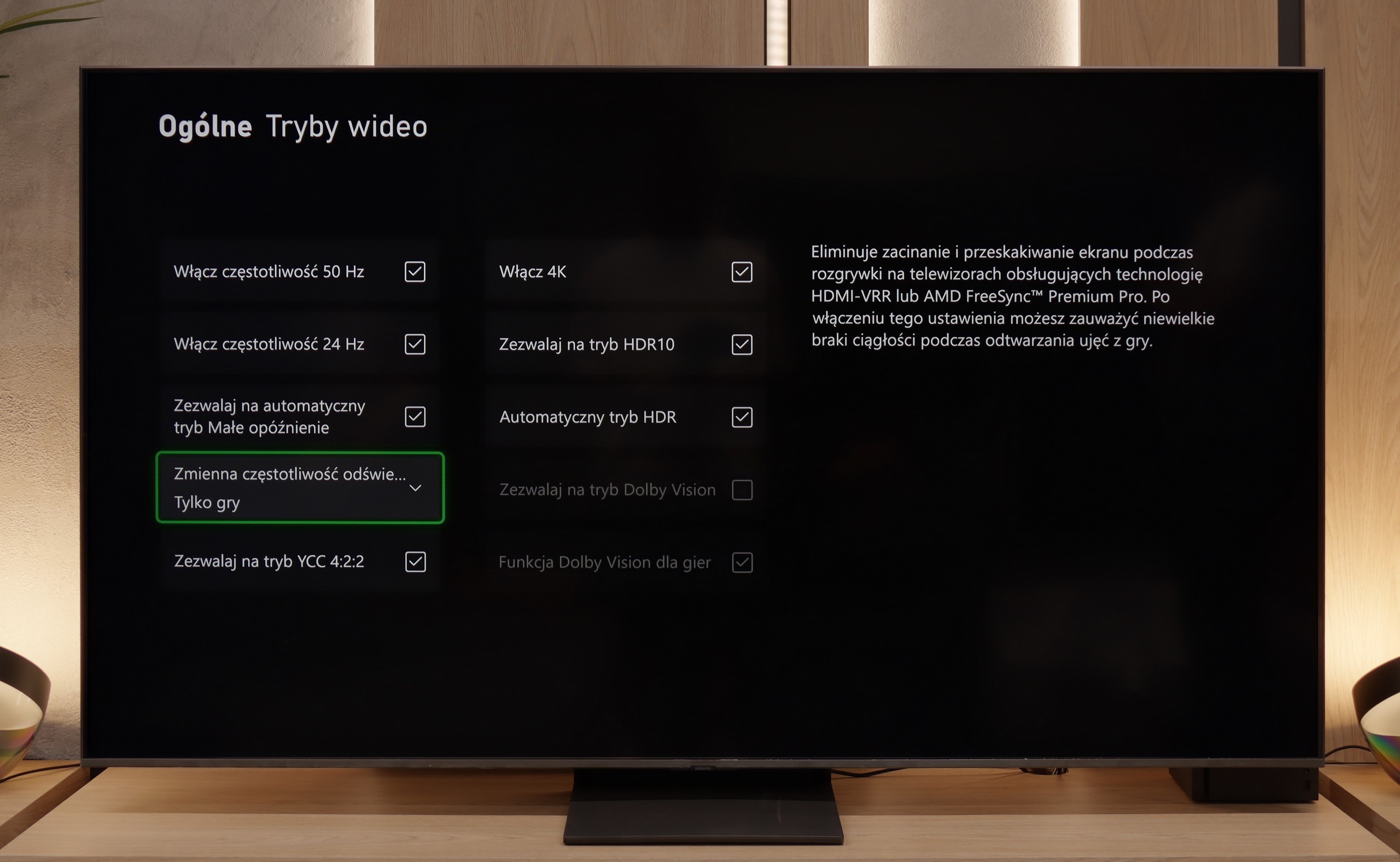

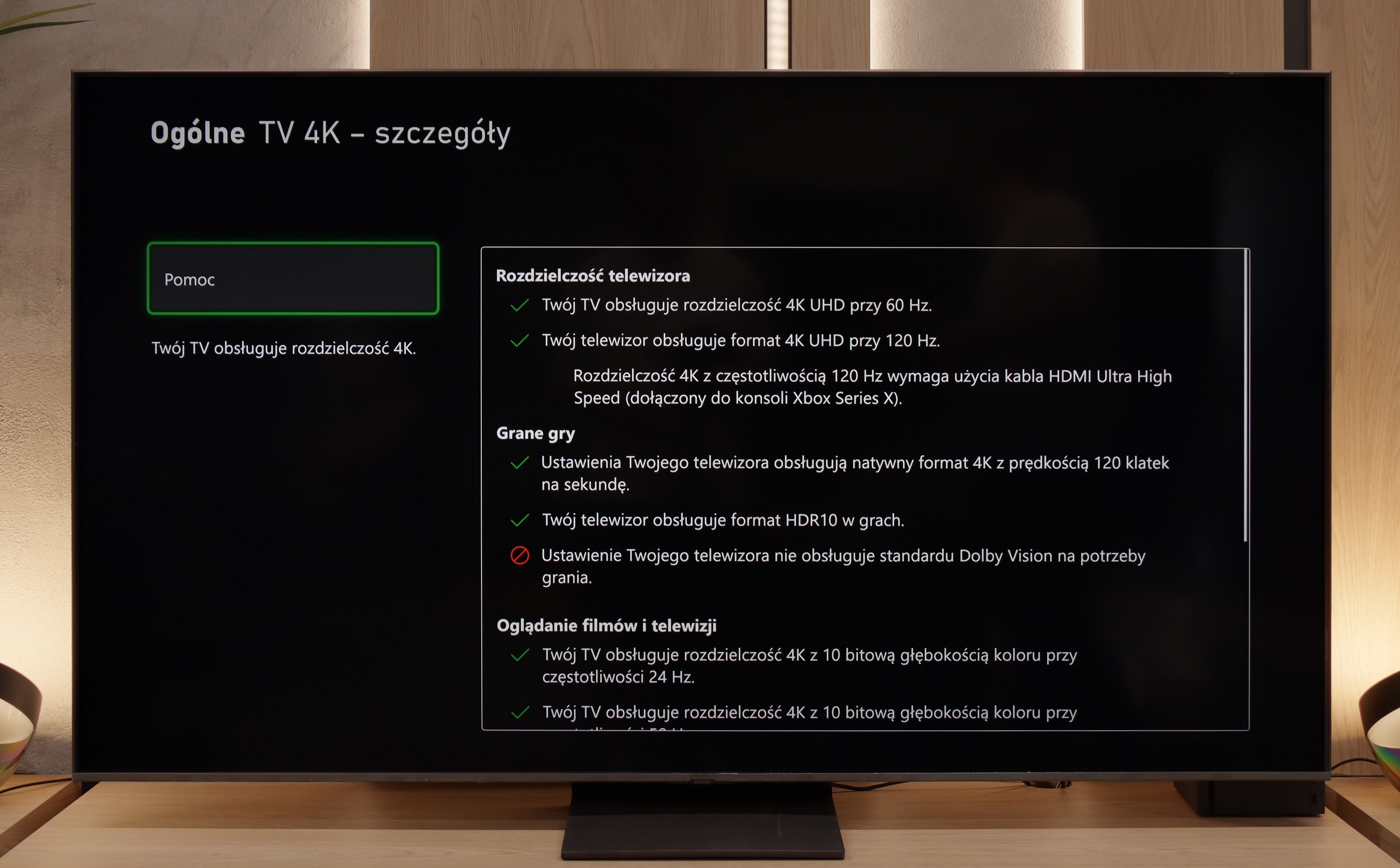

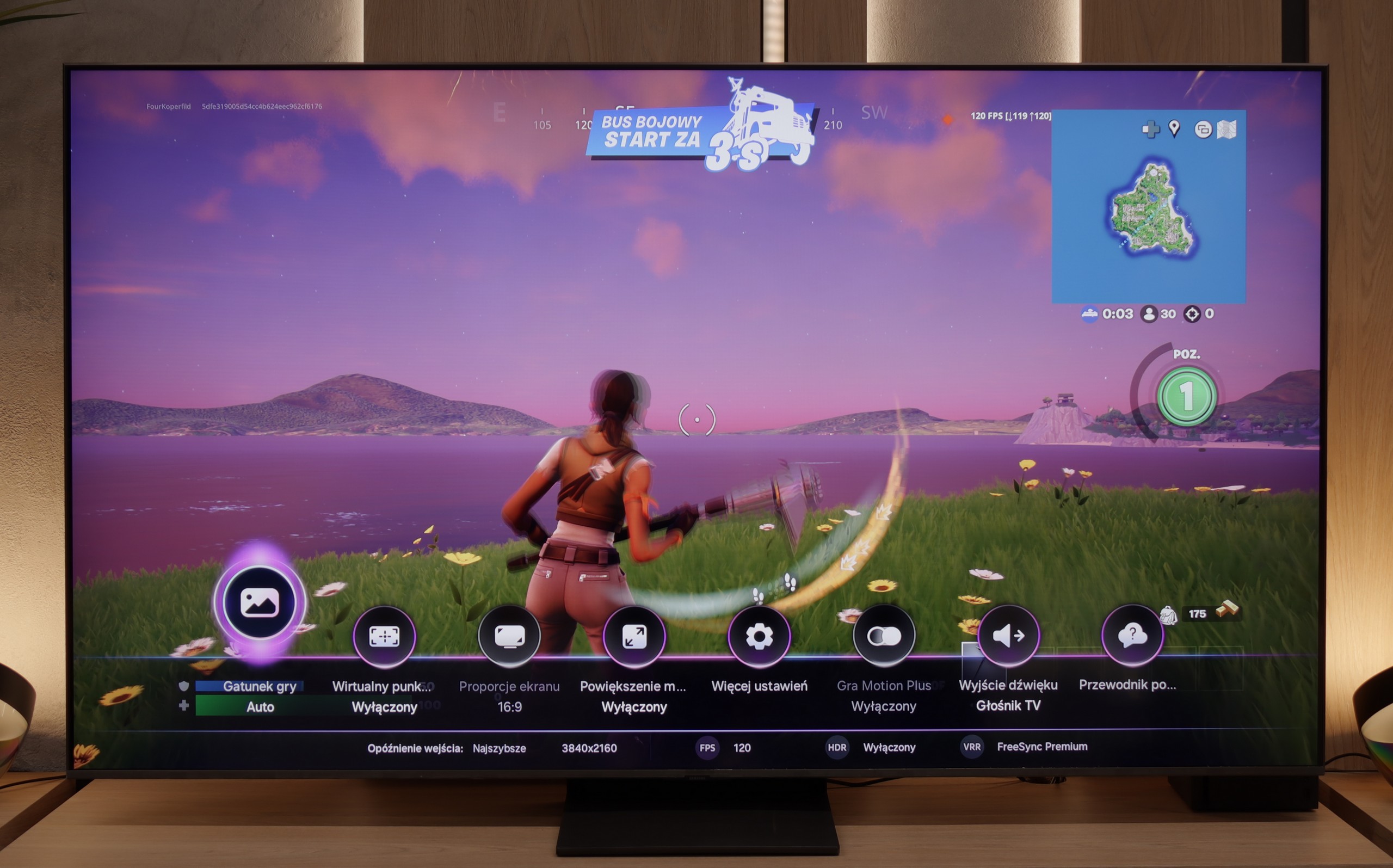

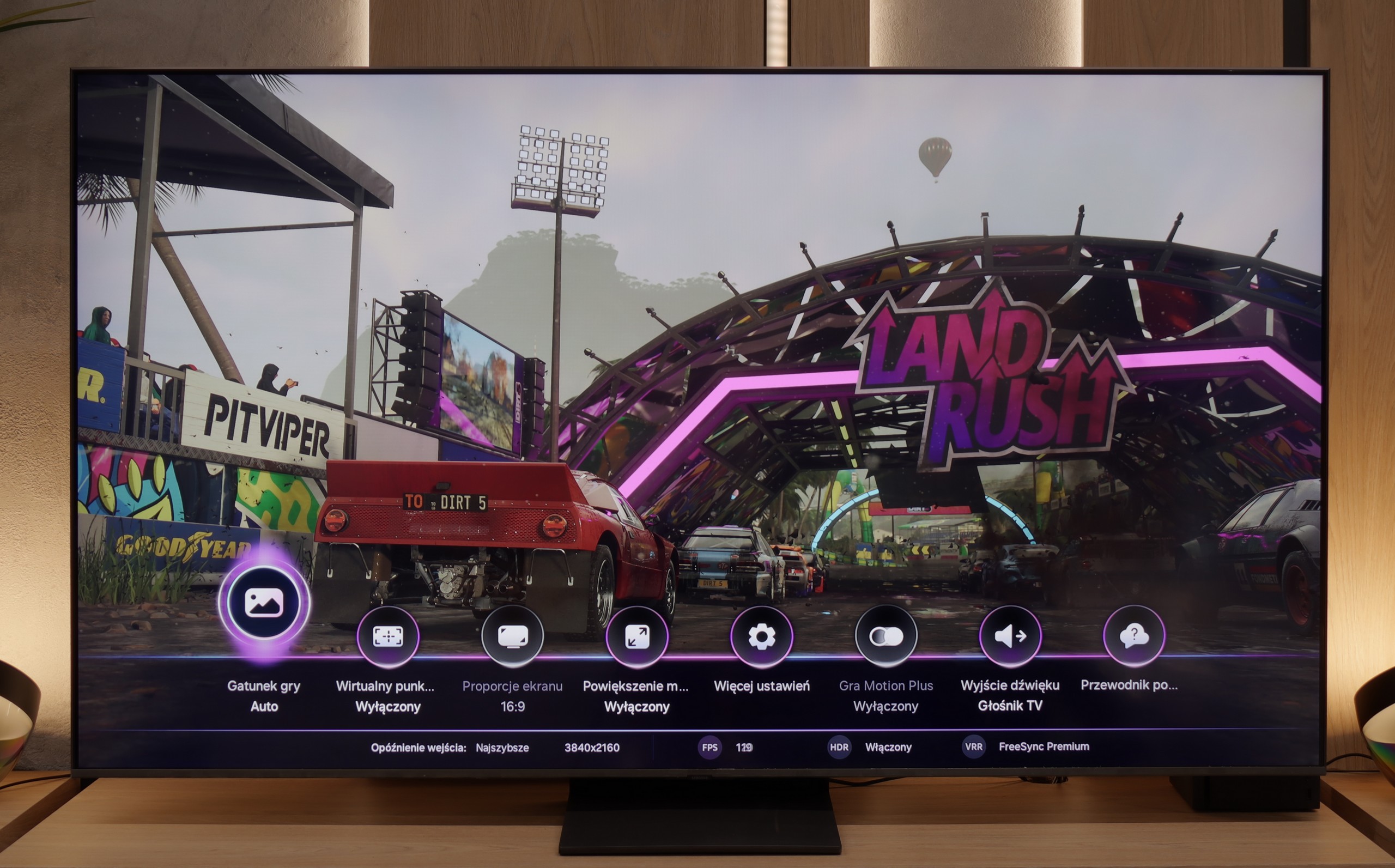
Samsung Q60D has been equipped with features such as ALLM (Auto Low Latency Mode), HGiG (HDR Gaming Interest Group) and Game Bar, which significantly enhance the gaming experience. However, the lack of HDMI 2.1 implementation limits its capabilities, preventing the use of VRR (Variable Refresh Rate), which could further improve smoothness and image quality. Generally, for casual gamers, this TV should perform well in everyday use, providing satisfactory gaming experiences. However, if we are more demanding in terms of gaming, it is worth considering models with a higher refresh rate and HDMI 2.1, which will ensure full functionality and better support for the latest games. In such cases, investing in a more advanced TV will yield significantly better results in terms of smoothness and image quality, which is crucial for gaming enthusiasts.
Samsung QN80F is a TV that delivers on almost every front when it comes to gaming. We have a 144 Hz panel, four fully-fledged HDMI 2.1 ports, support for gamers in the form of variable refresh rate (VRR), auto low latency mode (ALLM), and even one of the best-designed game bars on the market. The cherry on top is the motion smoother, which – as the only one in the world – works in games without significantly increasing input lag. Sounds like an almost perfect TV for gamers? And indeed, it’s almost that.
As usual, Samsung does not support Dolby Vision in gaming, but that’s no surprise anymore. However, what is much more surprising is that... the HGIG feature has disappeared – which is a system that allows a console (e.g. PlayStation 5 or Xbox Series X) to precisely match HDR tone mapping to the capabilities of the TV. In the latest firmware update for the 2025 models, this option simply vanished. It looks more like a bug than a deliberate move, but it must be honestly noted that as of the writing of this review, the HGIG feature is simply absent.
And it’s this one missing feature that turns the QN80F from an almost perfect gaming TV into a “nearly” perfect device. It’s a pity – because everything else indicated that Samsung could once again set the bar very high in this generation.
Input lag
9.9/10
9.8/10
SDR
HDR
Dolby Vision
When it comes to input lag, the Samsung Q60D TV does not disappoint in this aspect. With results around 15 ms, the television offers truly impressive responsiveness. Such low input lag means that reactions to commands from the controller are immediate, resulting in a better gaming experience, especially in dynamic titles that require precise movements.
The QN80F doesn't disappoint when it comes to response time. The input lag for 120 Hz content drops below 10 ms, which can be considered an almost perfect result – it's hard to expect more in this class of televisions. Gaming is smooth, responsive, and without delays that could annoy even the most sensitive players. For 60 Hz material, the lag is higher, around 19 ms, but this is a completely natural phenomenon and still falls within comfortable limits.
Compatibility with PC
6/10
8.8/10

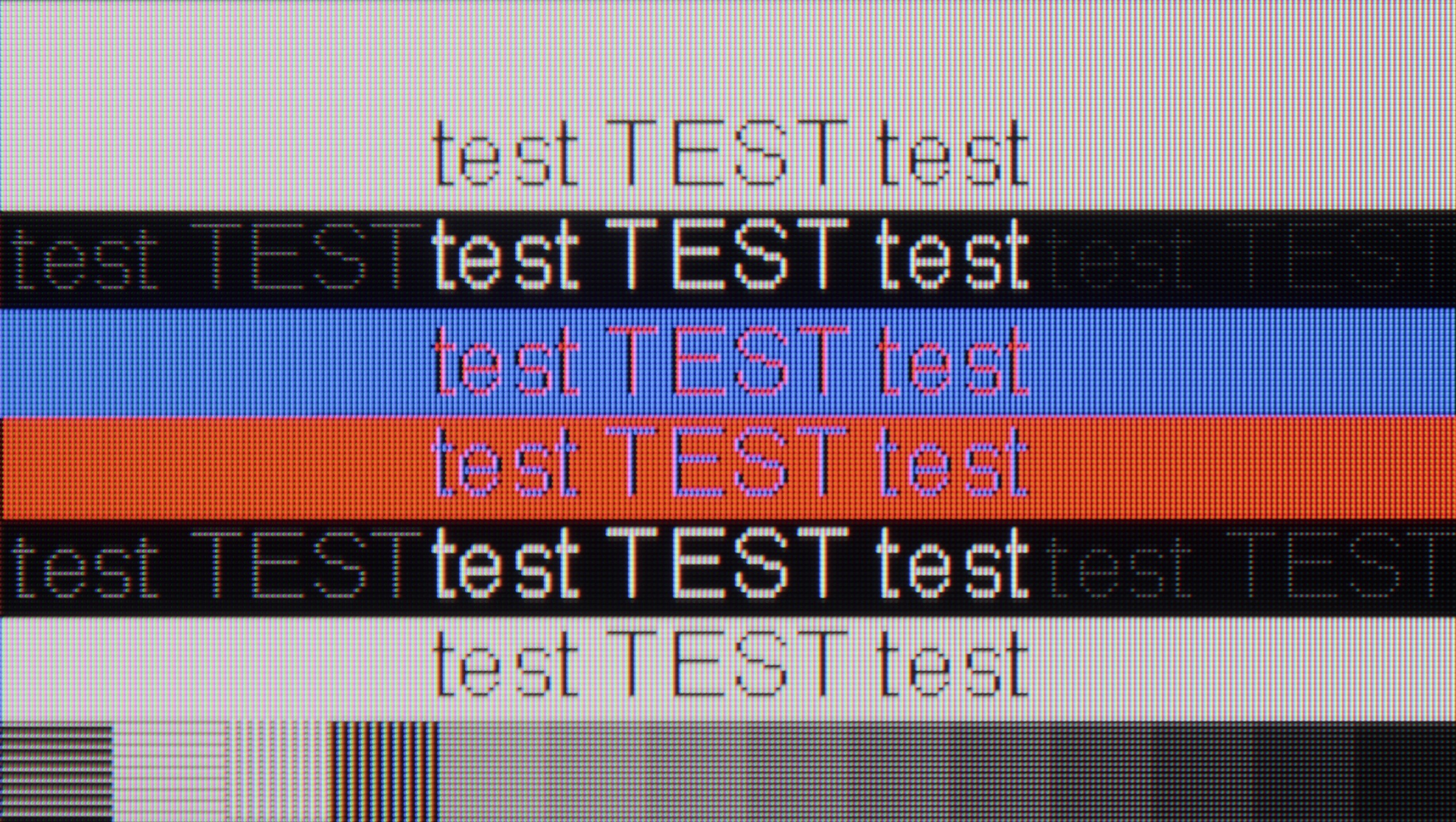
When it comes to working on a PC, the Samsung Q60D television offers very good font readability, regardless of the background it is displayed on. Thanks to support for the 4:4:4 chroma format, text is clear and sharp, which is important when using office applications or browsing the internet. Additionally, a low input lag of 15 ms means that responses are immediate, significantly improving user comfort during work or gaming on a computer. However, the television has a 60Hz panel and does not support G-Sync functionality, which could satisfy PC gamers.
Playing on the QN80F with a computer connected is pure delight. The television works seamlessly with NVIDIA graphics cards (thanks to G-Sync support) and AMD (thanks to FreeSync Premium), and the 144 Hz refresh rate only enhances comfort during fast-paced gaming. Everything works right away, without unnecessary fiddling with settings – just as it should.
When it comes to work, it's very good as well. The readability of fonts is high, and texts look sharp and clear. With very thin horizontal lines, you might notice slight imperfections or shadows, but honestly – you have to take a good look. Unless, like us, you sometimes like to examine the screen with a magnifying glass… then you might spot something 😉.
Viewing angles
3/10
3.1/10
Samsung Q60D is equipped with a VA panel. The viewing angles are not its strongest point; when we watch the picture from the side, we may notice colour distortions and a drop in brightness. However, VA panels stand out with good black reproduction, which translates to deeper and more intense movie scenes.
QN80F, like most TVs with a VA panel, isn't impressive in terms of viewing angles. Just tilt a bit to the side, and you'll notice a significant drop in brightness and lost colour saturation. The image loses its "depth" and "vividness", and darker scenes may appear slightly washed out. However, this is a typical characteristic of VA panels, which offer significantly better native contrast compared to IPS panels in return. In short: you win some, you lose some. If you're sitting directly in front of the screen – there won't be any issues. But when watching together in a larger group, it's worth keeping this in mind.
TV efficiency during daytime
6/10
6.6/10

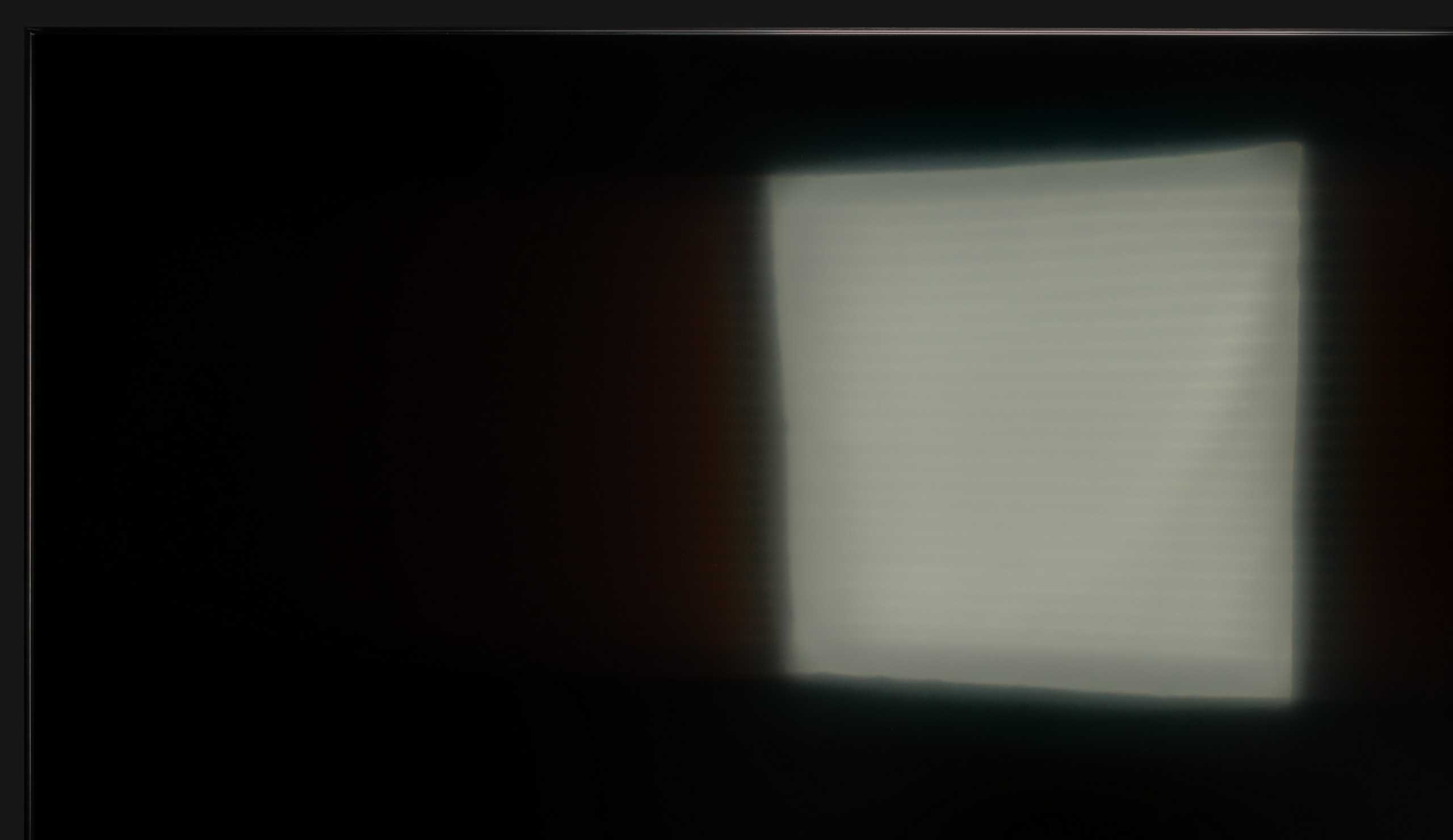

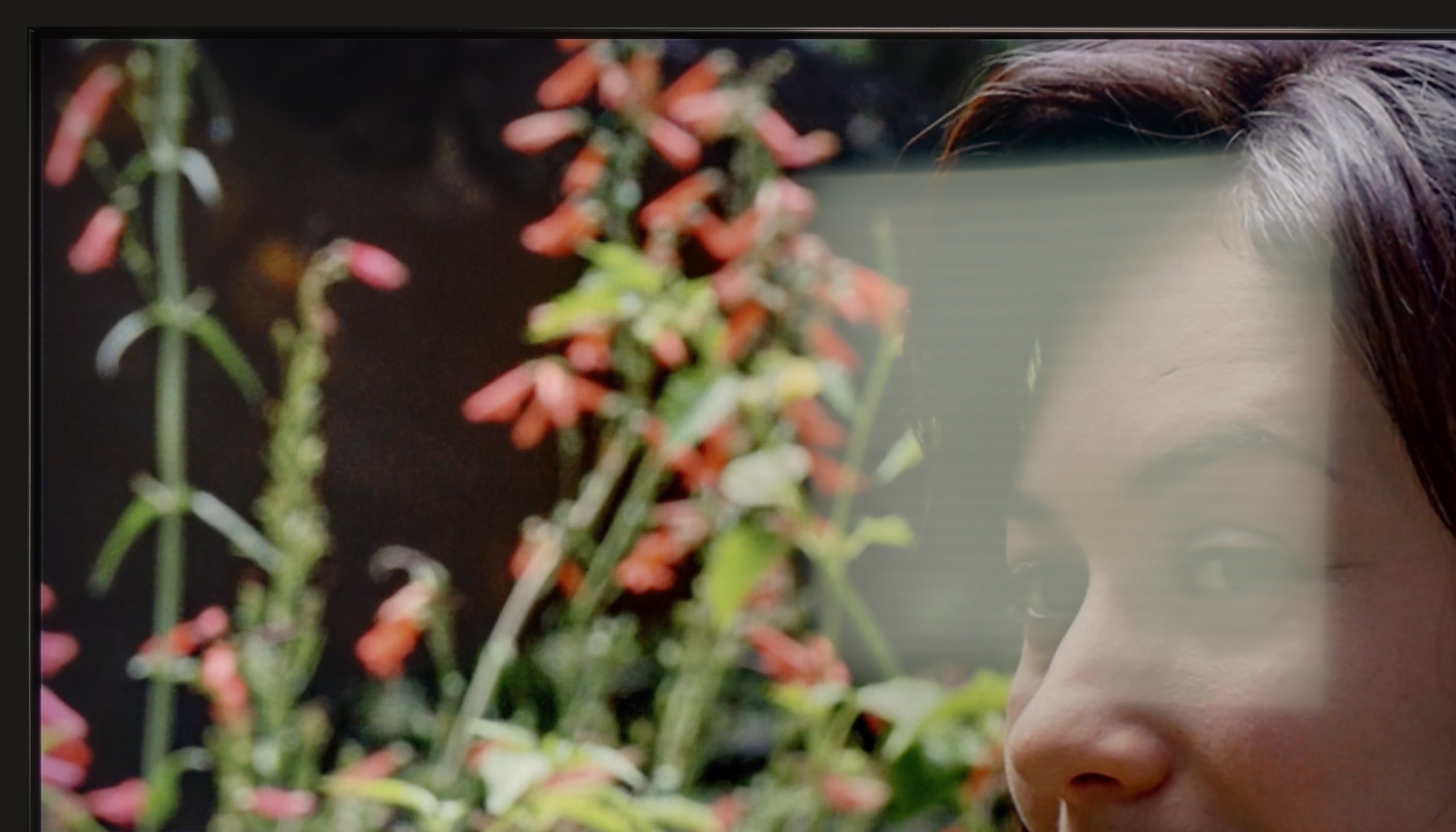
Matrix brightness
Average luminance SDR
SAMSUNG QN80F: 543 cd/m2
Samsung Q60D / Q67D / Q68D: 542 cd/m2
Samsung Q60D is equipped with a satin matrix, which manages glare reduction moderately. Although the matrix does not eliminate it completely, its high brightness level of 550 nits ensures that the picture remains clear even in bright lighting conditions. This makes watching television during the day still comfortable, with details being well visible, making this model a suitable choice for those using the television in daylight.
QN80F is really a bright television. The average brightness in SDR material is around 550 nits, regardless of the scene, which practically means that you can comfortably watch content even in a well-lit room – and there’s no need to close the blinds every time we turn on a film. The new satin coating on the panel also deserves praise, as it handles glare much better compared to last year's QN80D. Reflections are less bothersome, and the screen maintains readability in various lighting conditions. It’s hard to nitpick here – the QN80F performs simply brilliantly during the day.
Details about the matrix
Subpixel Structure:

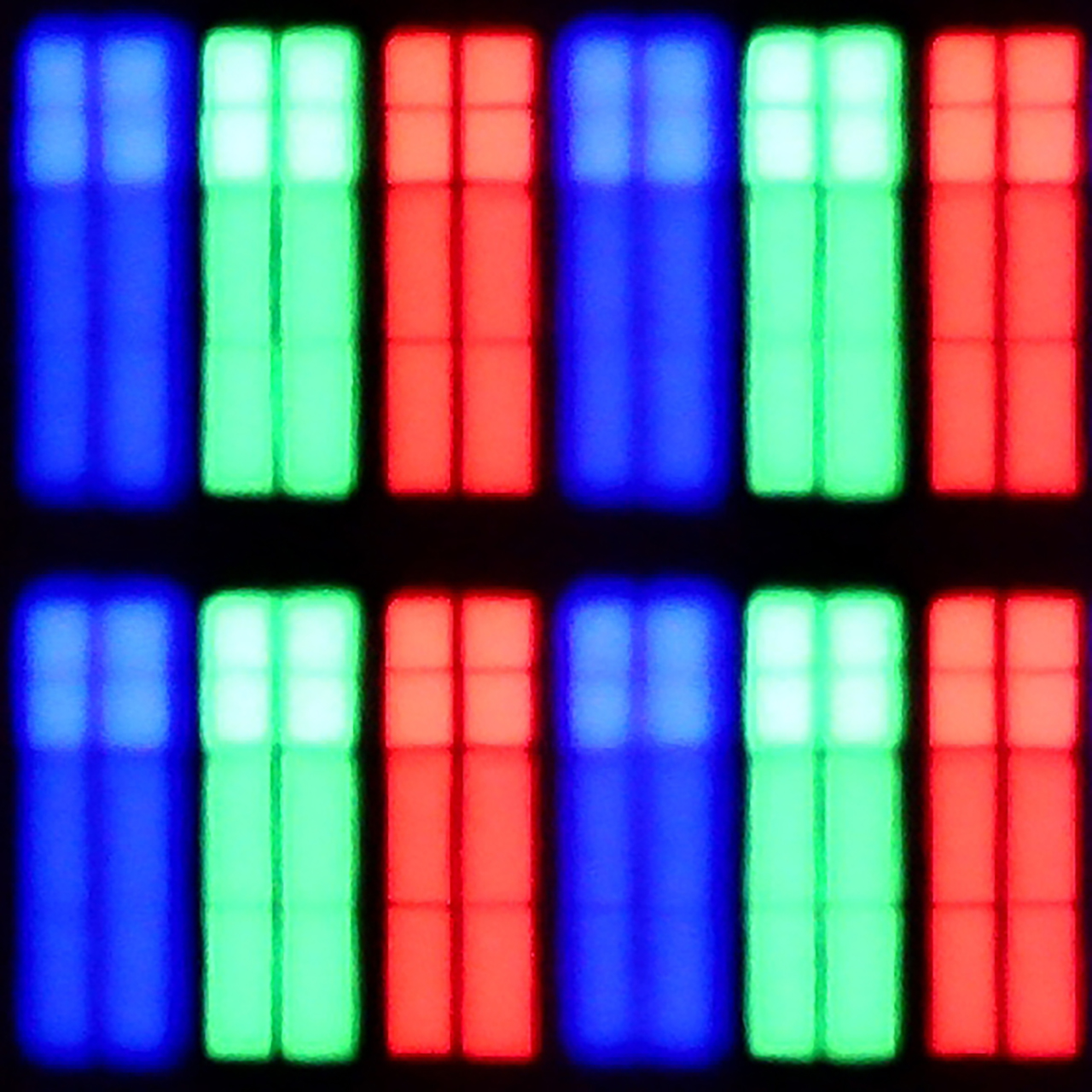
Panel uniformity and thermal imaging:

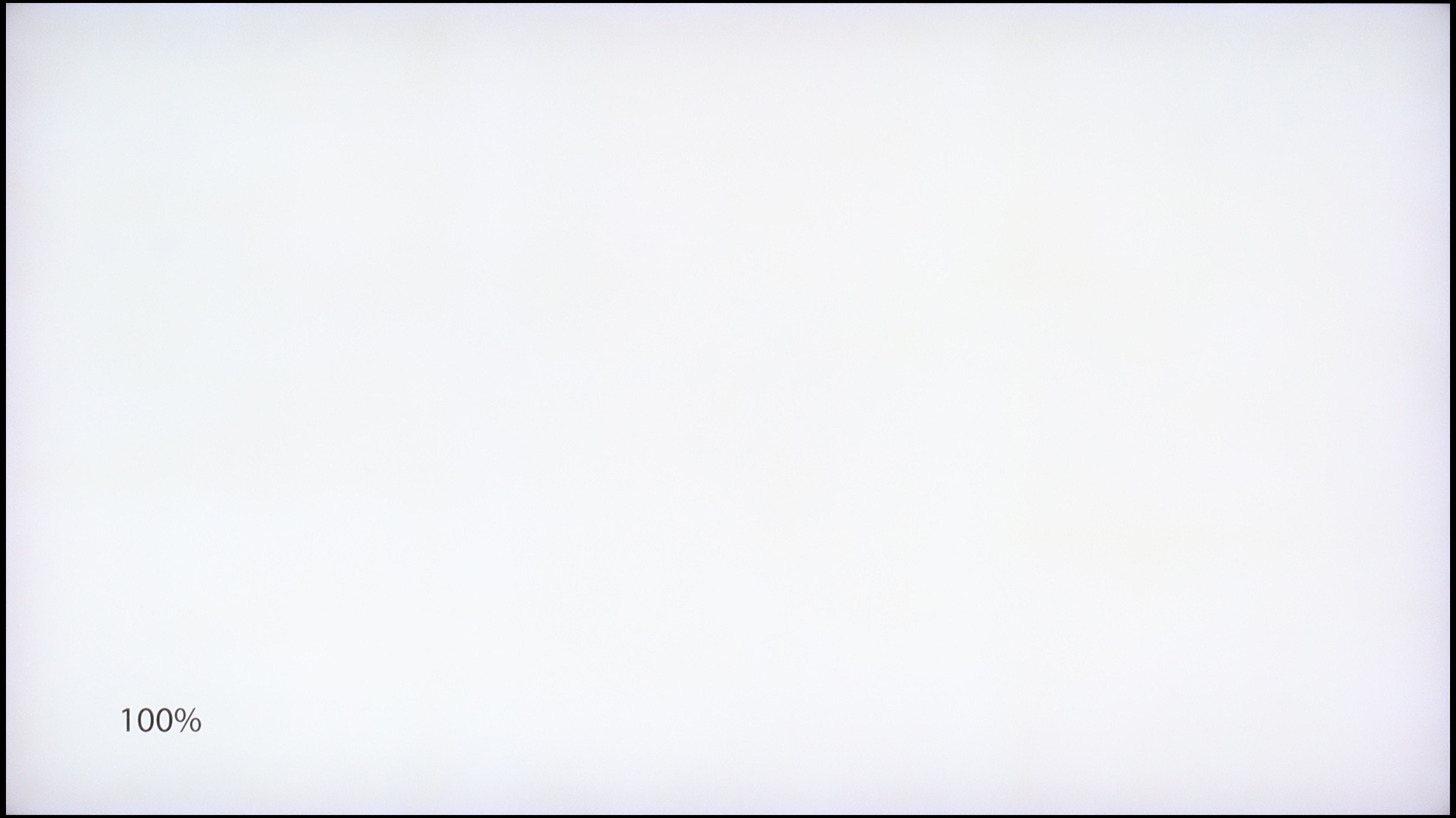
Samsung Q60D / Q67D / Q68D
SAMSUNG QN80F
TV features
7/10
7.7/10
- HDMI inputs3 x HDMI 2.0, 0 x HDMI 2.10 x HDMI 2.0, 4 x HDMI 2.1 48Gbps
- OutputsToslink (Optical audio), eARC (HDMI), ARC (HDMI)Toslink (Optical audio), eARC (HDMI), ARC (HDMI)
- Network InterfacesWi-Fi 2.4GHz, Wi-Fi 5GHz, Ethernet (LAN) 100MbpsWi-Fi 2.4GHz, Wi-Fi 5GHz, Ethernet (LAN) 100Mbps
- TV receptionDVB-T, DVB-T2, DVB-S, DVB-S2, DVB-CDVB-T, DVB-T2, DVB-S, DVB-S2, DVB-C
Classic features:
- Recording to USB (terrestrial TV)
- Recording programming
- Picture in Picture (PiP)
- RF remote control (no need to aim at the screen)
- Backlit remote control
- Teletext
- Audio only mode
- Bluetooth headphones support
- Simultaneous Bluetooth headphones & TV audio
Smart features:
- AirPlay
- Screen mirroring (Windows Miracast)
- Voice search
- Voice search in native language
- Ability to connect a keyboard and mouse


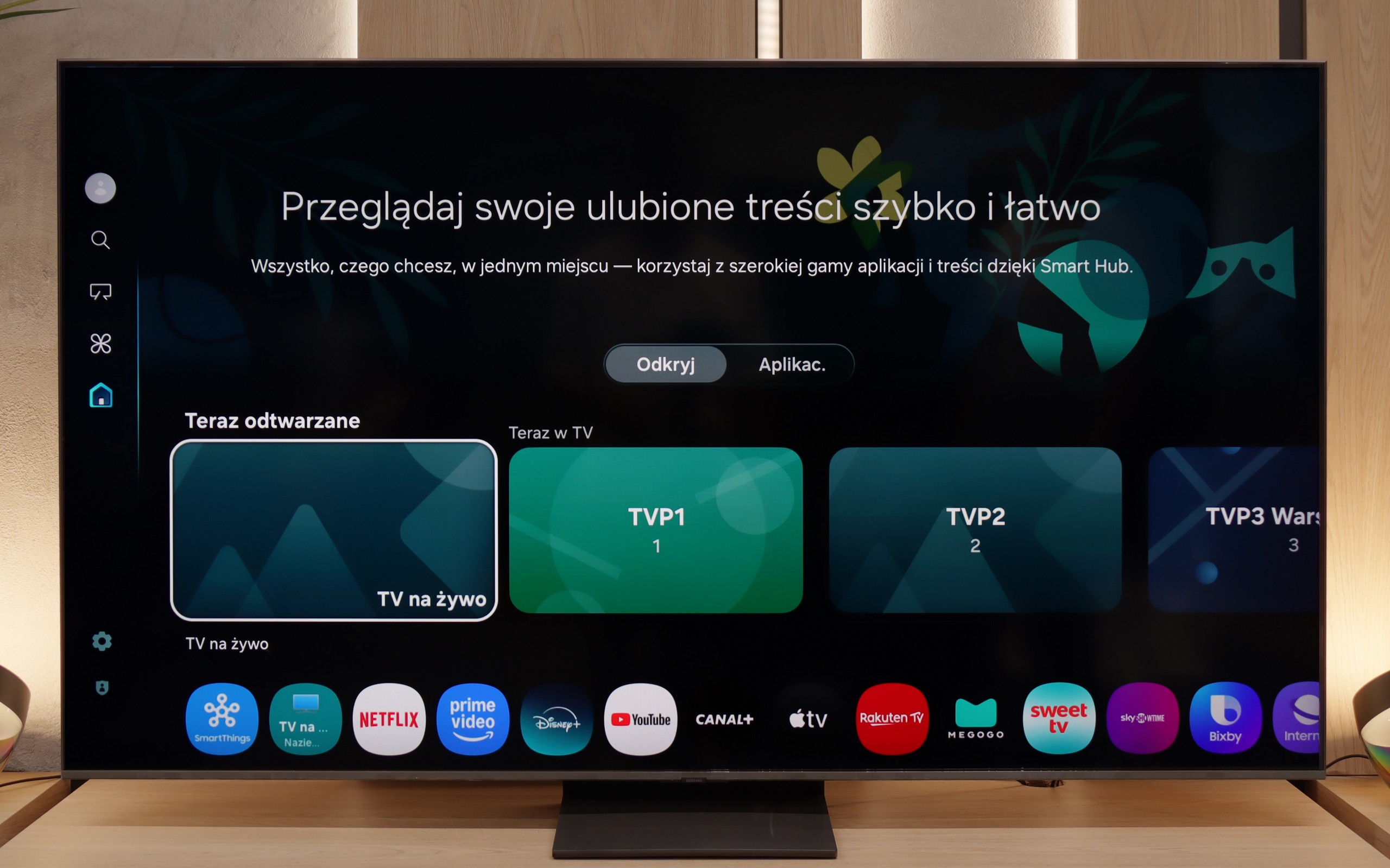
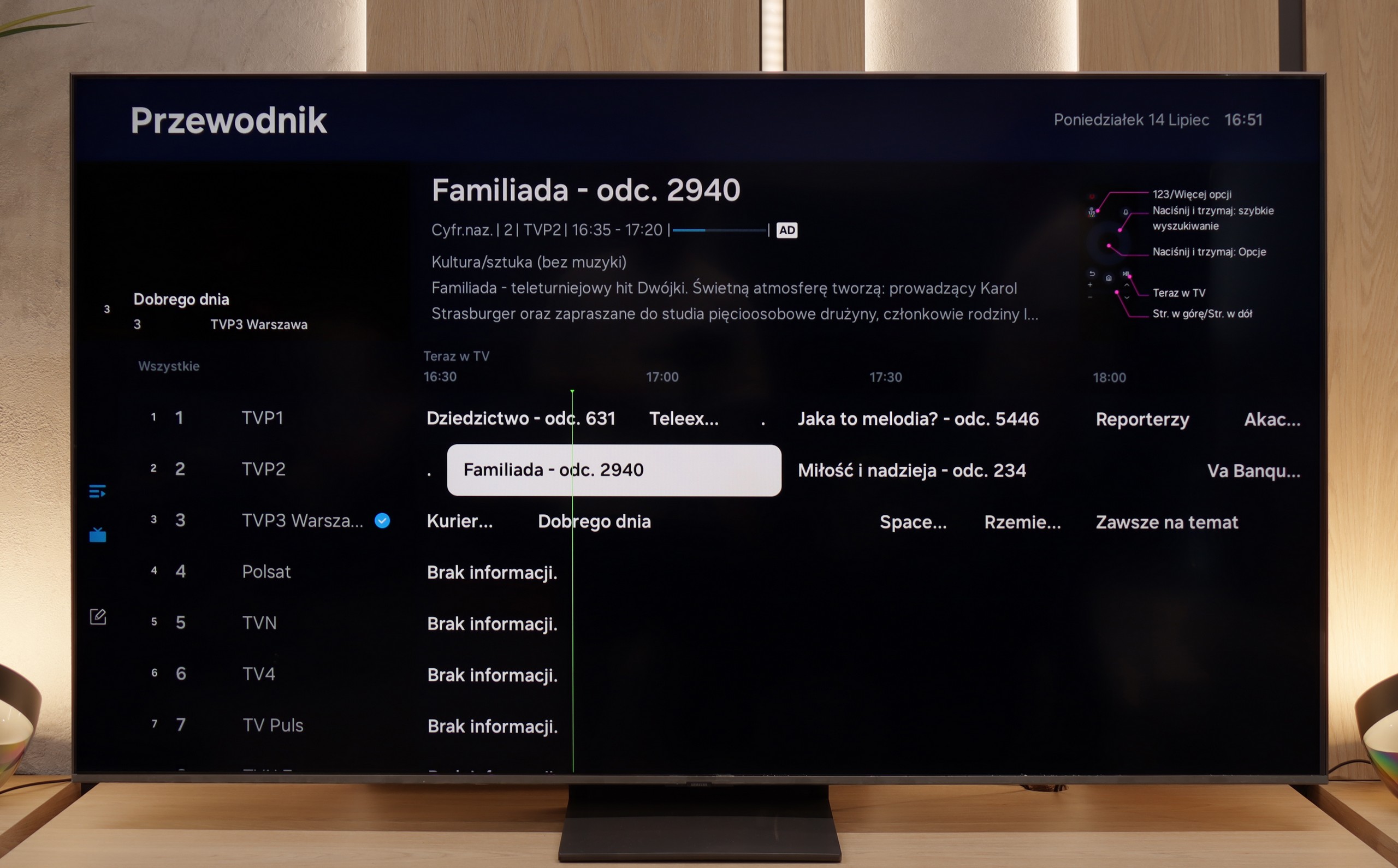
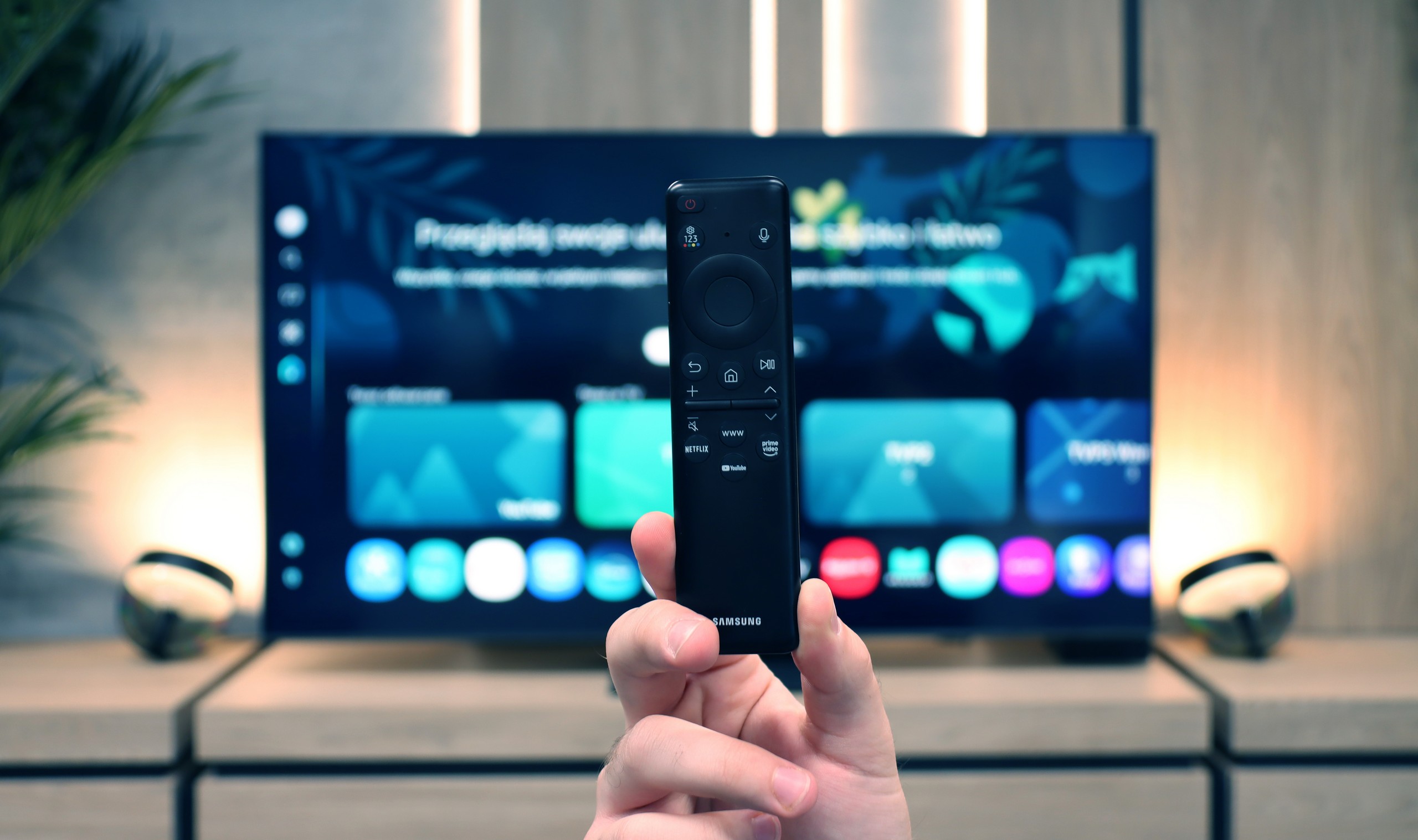
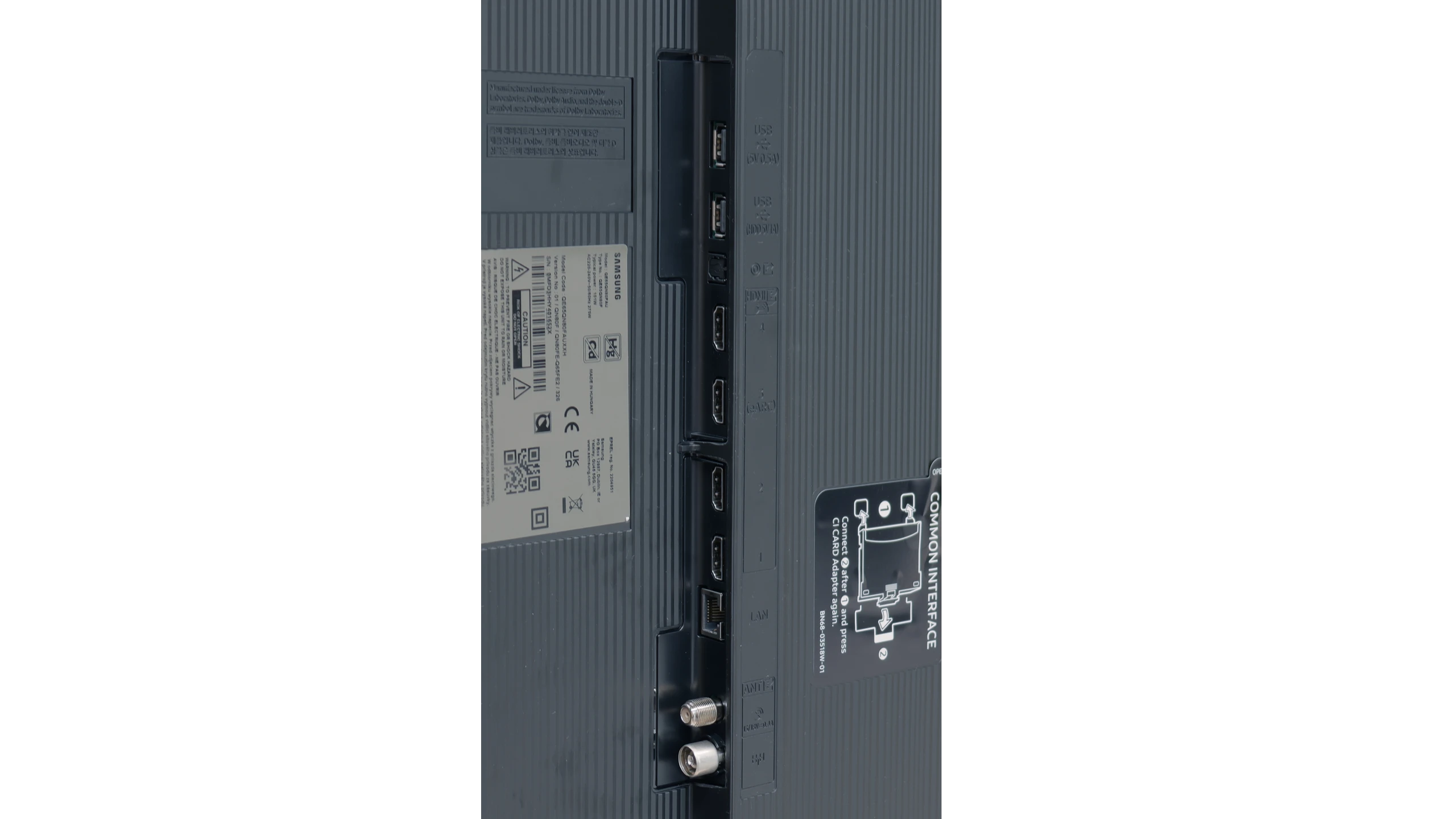
Samsung Q60D runs on the proprietary Tizen operating system, which, although not as open as Google's system and having certain limitations regarding available applications, should satisfy most users. The interface is clear and intuitive, allowing easy access to popular streaming platforms such as Netflix, YouTube, and Prime Video. Users will also appreciate the ability to personalise the home screen, enabling quick jumps to favourite apps and content. However, the lack of recording functionality may be a concern for those who would like to archive their favourite shows or movies for later. On the other hand, a pleasant surprise is the presence of AirPlay functionality, which allows seamless content streaming from Apple devices, such as iPhone or iPad. This means users can easily share photos, videos, and other materials without the need for cables.
Additionally, the television allows the connection of various peripheral devices via Bluetooth, significantly increasing its functionality. Users can take advantage of wireless headphones, soundbars, and other accessories, enhancing comfort during use. The remote control included with the television is slim, elegant, and ergonomic. It is equipped with an internal battery that can be charged via a USB-C port or solar energy, providing a convenient solution that eliminates the need for battery replacements. Moreover, it allows for controlling other devices such as an external NC+ / Canal + decoder.
Furthermore, the SmartThings app for smartphones and iPhone enables the integration of the television with other smart devices in the home. This allows users to remotely control various elements of their home, such as Philips Hue smart lighting, Yeelight, and other products compatible with this system. The Samsung Q60D becomes the central point in a smart home, enabling easy management of daily tasks and entertainment.
SmartTV QN80F: Tizen
When it comes to smart features, the QN80F has nothing to be ashamed of. On the contrary – Tizen is one of the richest operating systems in terms of functionality. We have voice search, AirPlay support, Miracast and all the major streaming platforms at our fingertips. But Samsung's real advantage reveals itself in the smart home – SmartThings. Not only can you sync light bulbs and vacuum robots, but you can also integrate devices from other manufacturers, thanks to support for the Matter standard. And suddenly it turns out that the QN80F can serve as a home command centre. There is just one "but" – Tizen is a closed system, so we might not find a few lesser-known apps. However, in practice, it still has everything that 99% of users need.
Classic TV features:
When it comes to classic features, it’s just as good – well, almost. The QN80F supports Picture-in-Picture, a rare but still useful PiP feature. We'll easily find EPG, the good old teletext (yes, it works!) and the ability to connect external devices via Bluetooth – whether it's headphones or a soundbar. Unfortunately, it lacks the option to record to USB from the built-in tuners. This is a small annoyance, especially since competitors in a similar price range are increasingly offering this feature. It may not be a must-have function, but since everything else works so well, it’s a shame it's missing that finishing touch.
Playing files from USB
9.3/10
9/10
Supported photo formats:
Maximum photo resolution:

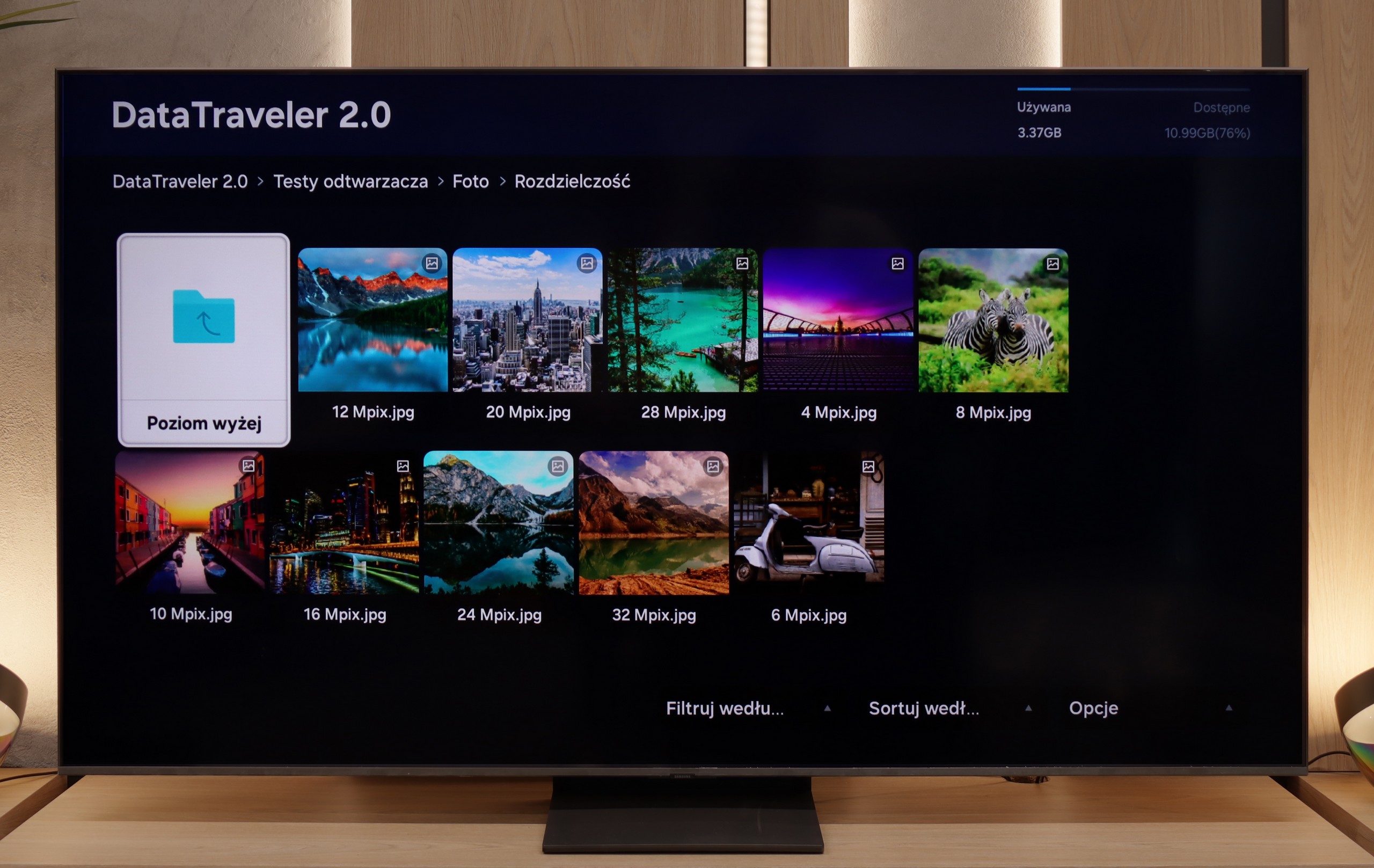
The built-in player in the Samsung Q60D TV is one of its significant advantages. It handles most video and audio files used during testing exceptionally well. The only exceptions are the Dolby Vision format, which is not surprising, and less popular codecs. It’s also worth noting the support for Polish characters and the ability to change font colours, enhancing user comfort.
The built-in media player in the QN80F handles most popular video formats – from classic MP4 to more demanding containers. It may not be as versatile as VLC, but for home use, it’s more than sufficient. The situation is worse with photos – here, unfortunately, it’s quite limited. Support mainly includes the JPG format, but hey, at least that’s the most important one 👌. During our tests, there was also a minor issue with subtitles. The QN80F only handled the simple text format .txt – unfortunately, other, more advanced formats (like .srt or .sub) were not recognized.
Apps
8.7/10
8.7/10














































Sound
6.2/10
6.7/10
- Maximum volume-87dB
- Dolby Digital Plus 7.1
- Dolby True HD 7.1
- Dolby Atmos in Dolby Digital Plus (JOC)
- Dolby Atmos in Dolby True HD
- DTS:X in DTS-HD MA
- DTS-HD Master Audio
When it comes to sound, due to the slim design of the Samsung Q60D TV, the audio quality is at an acceptable level, although it doesn’t stand out in any particular way. A positive aspect is the soundbar synchronisation feature thanks to Q-Symphony technology, which allows for a better audio experience. Unfortunately, in terms of audio codec support, there is a significant issue – the TV does not support the DTS format.
For a TV of this class, the QN80F sounds surprisingly good. It supports the Dolby Atmos format, which is worth noting as this is still not obvious in many models in this range. Unlike the thinner QN70F, here you can even feel a slight bass – all thanks to the thicker casing, which simply provides more space for the sound to "breathe". It's perfectly adequate for everyday viewing and series, and with the right settings, you could even consider listening to music without the need to connect external equipment. But – as is the case with Samsung, there is unfortunately a lack of support for the DTS:X format, so if we are using audio devices that support this format, we will first need to connect them to the amplifier and only then to the TV.
Acoustic Measurements
No acoustic data
87dBC (Max)
75dBC


